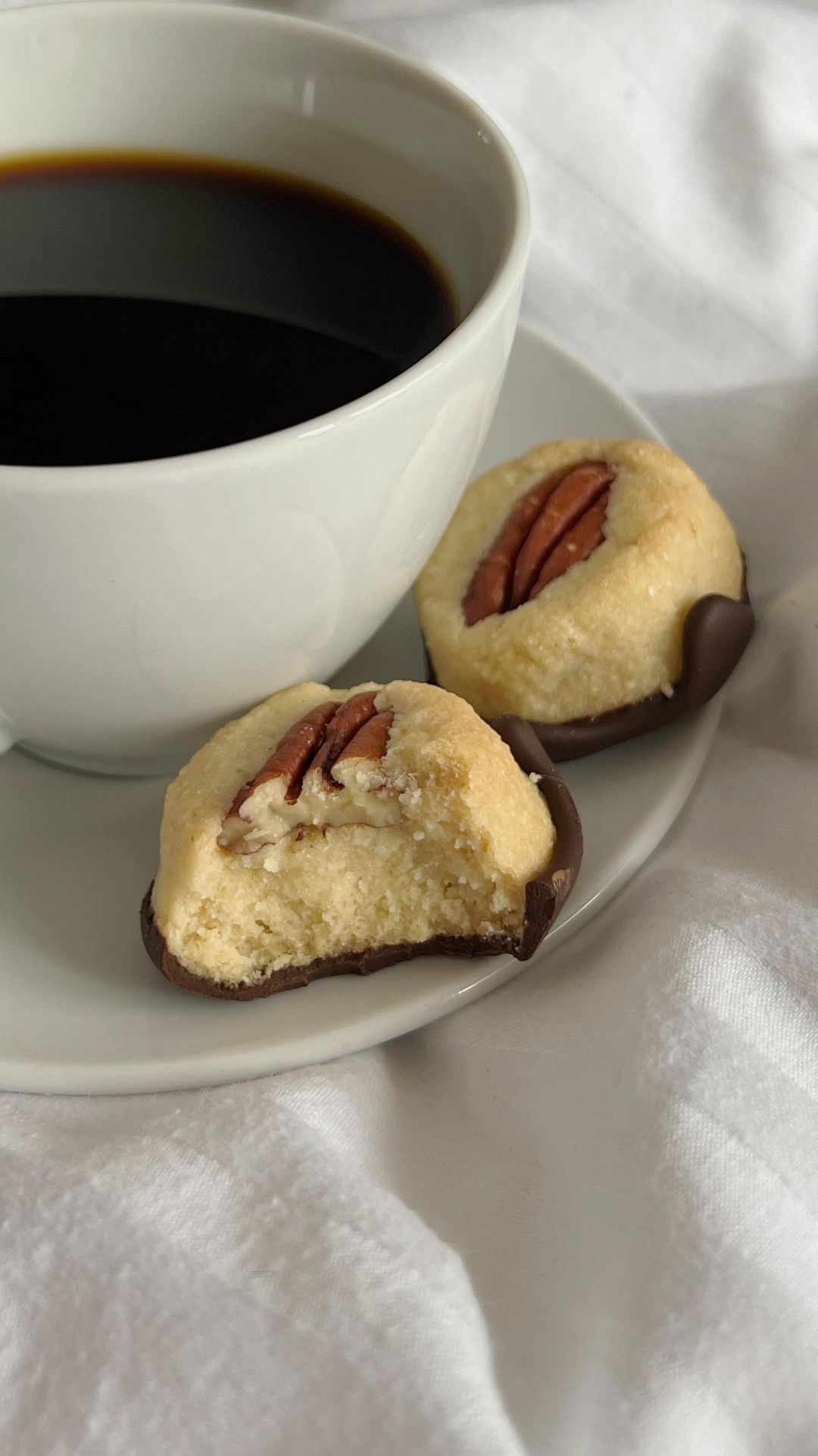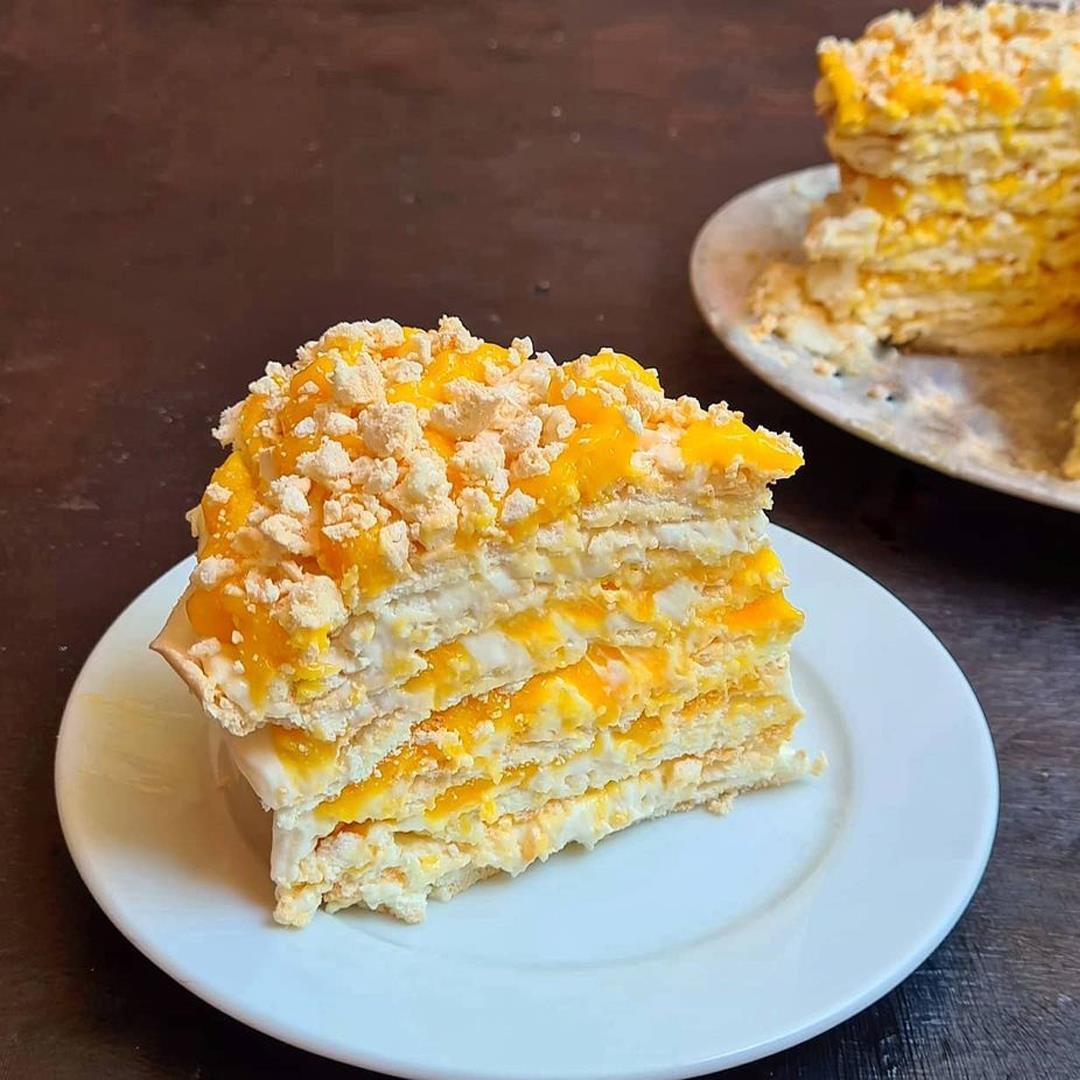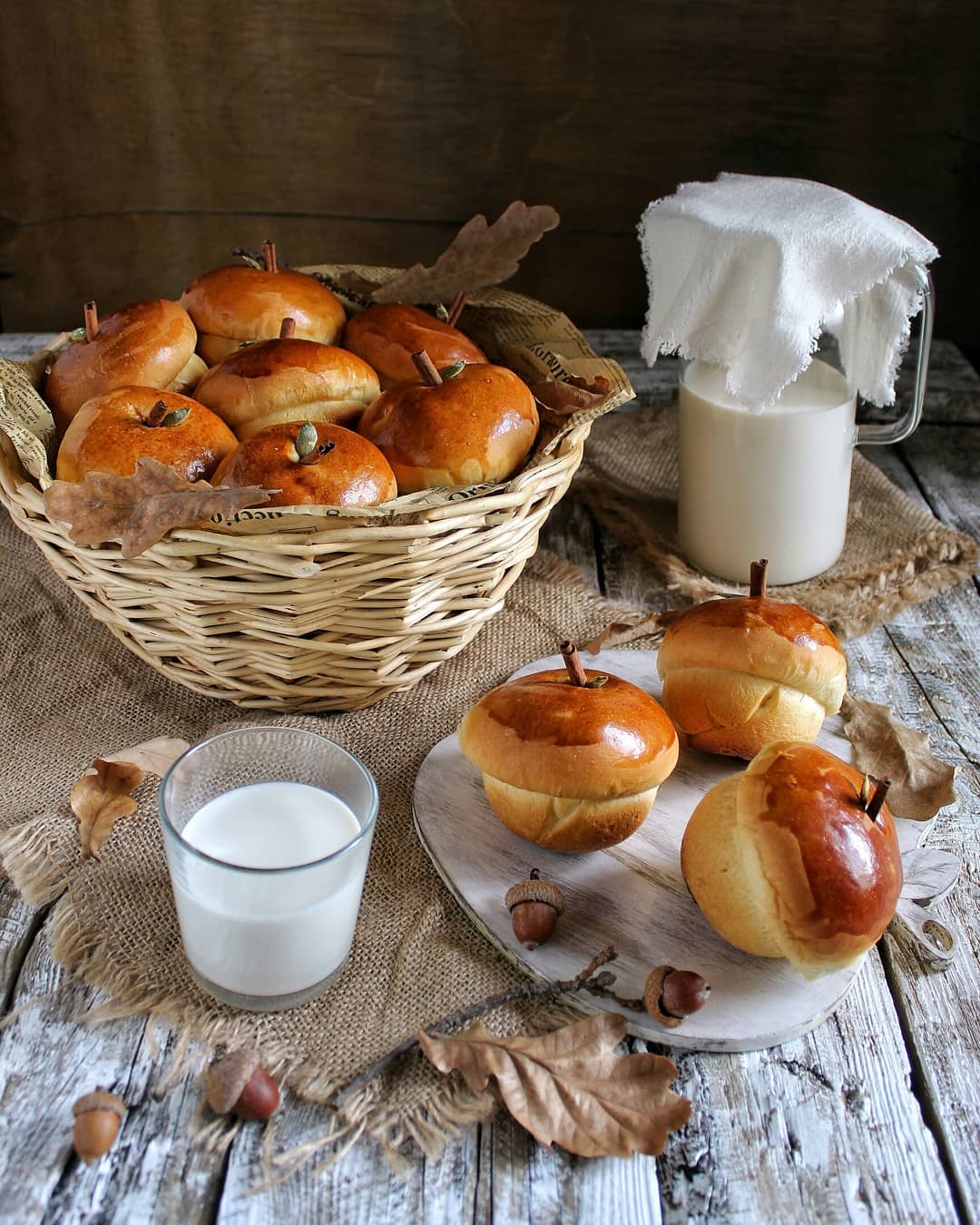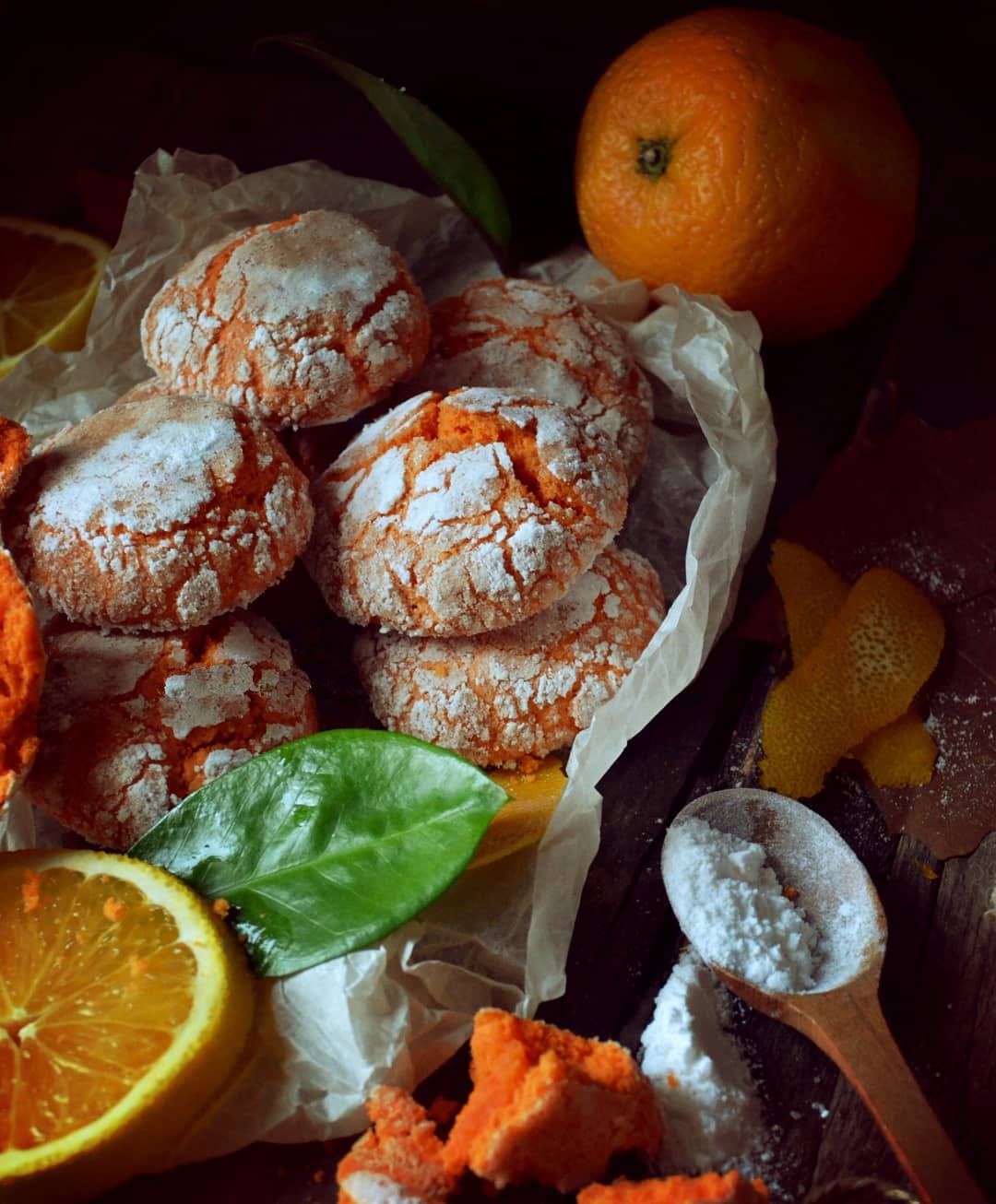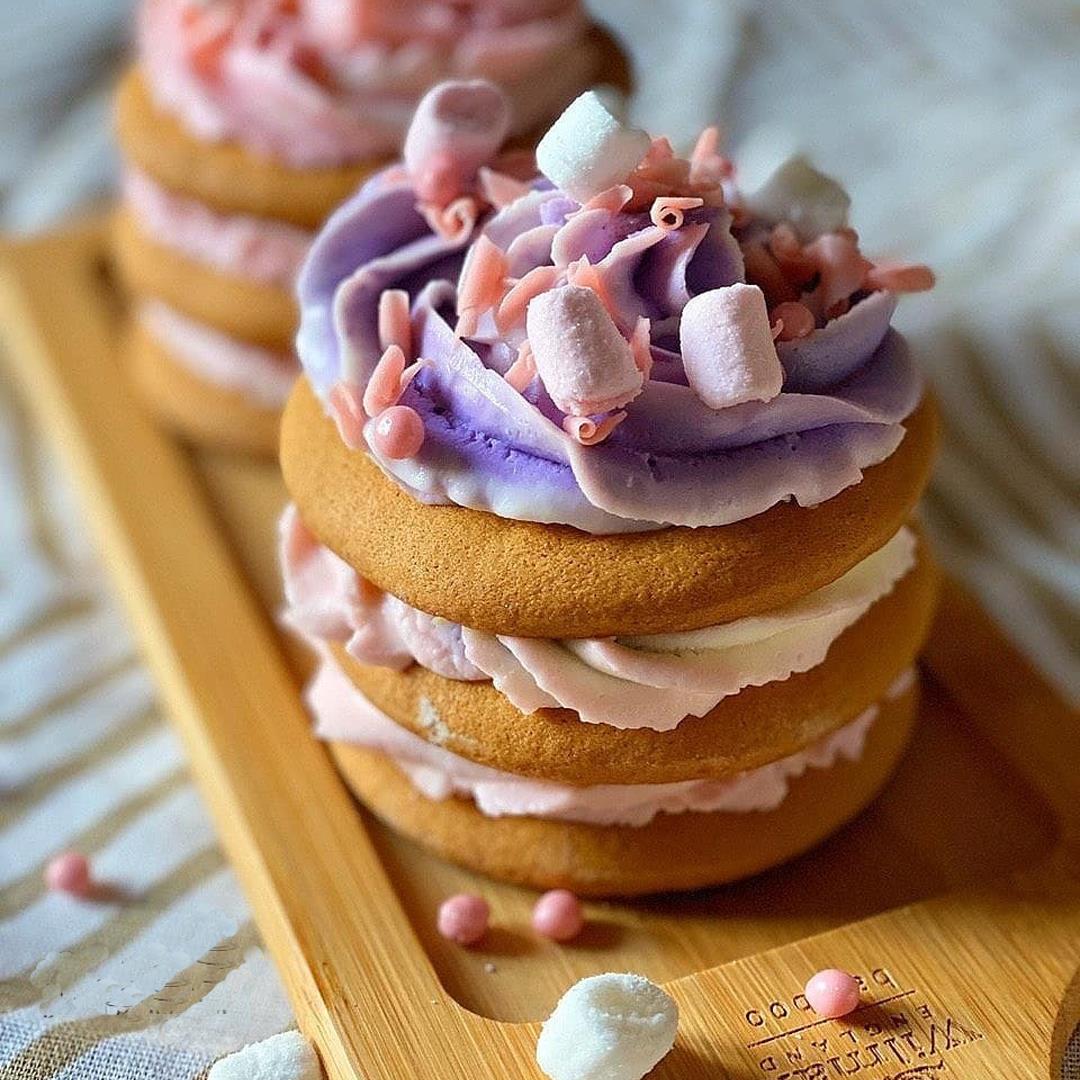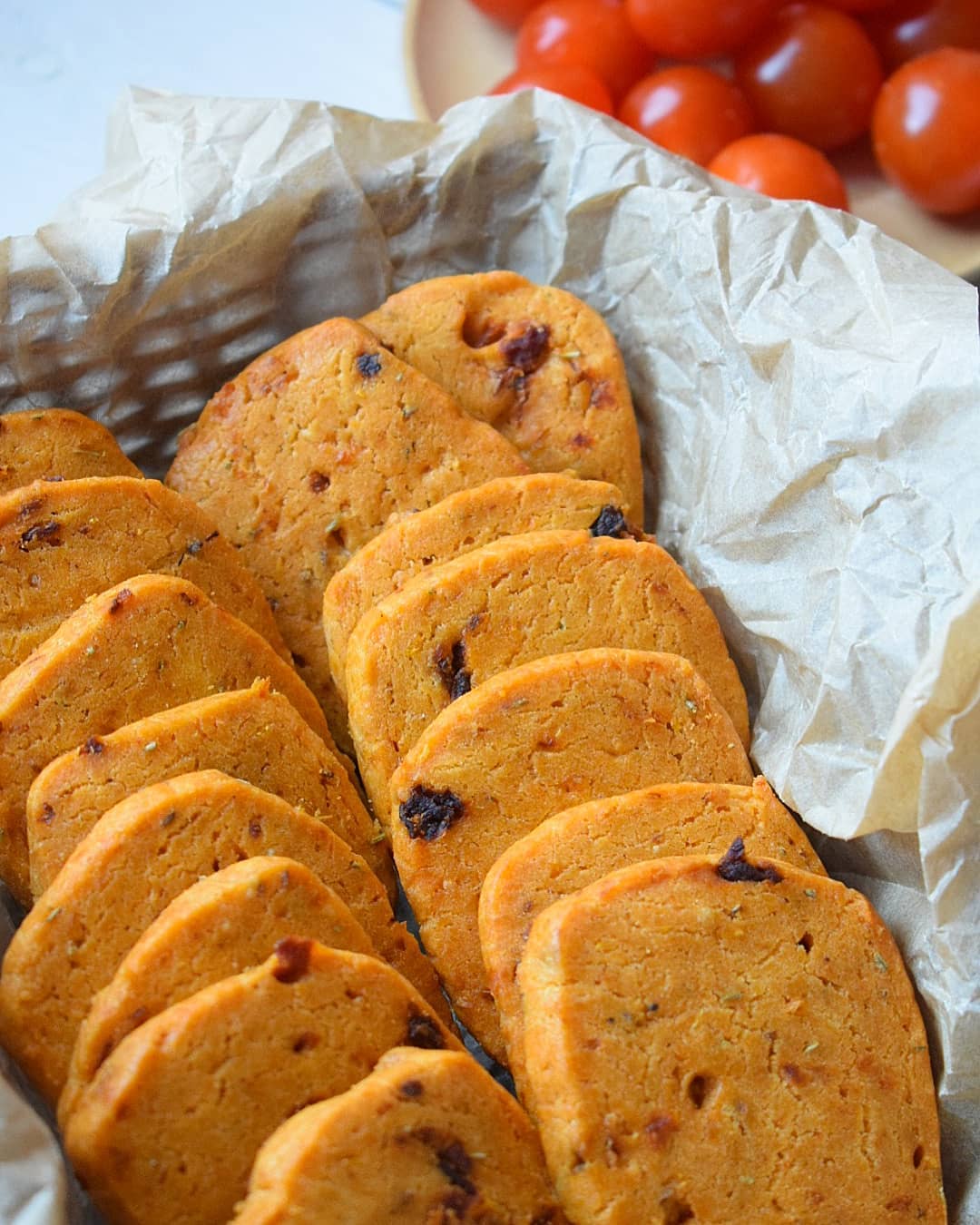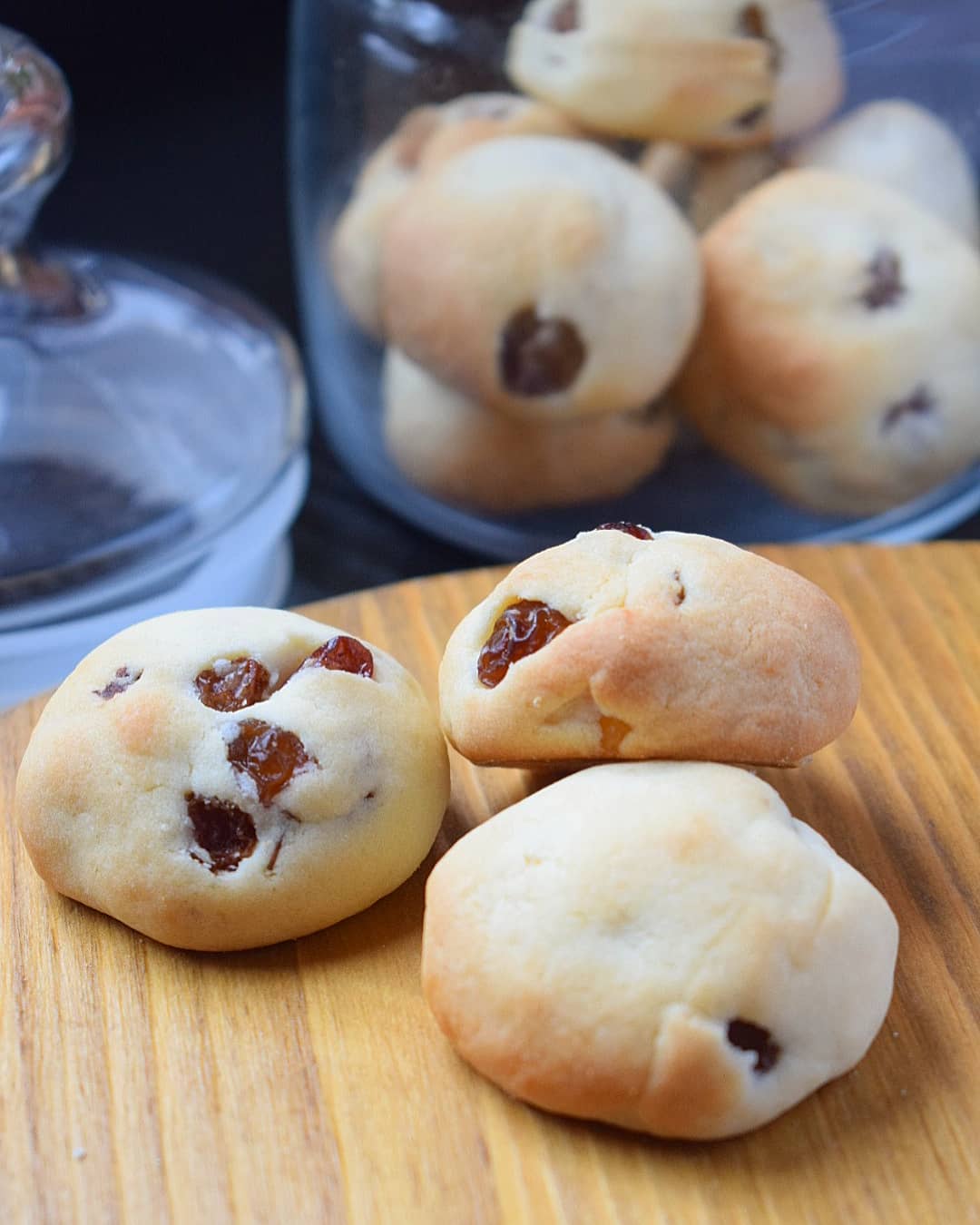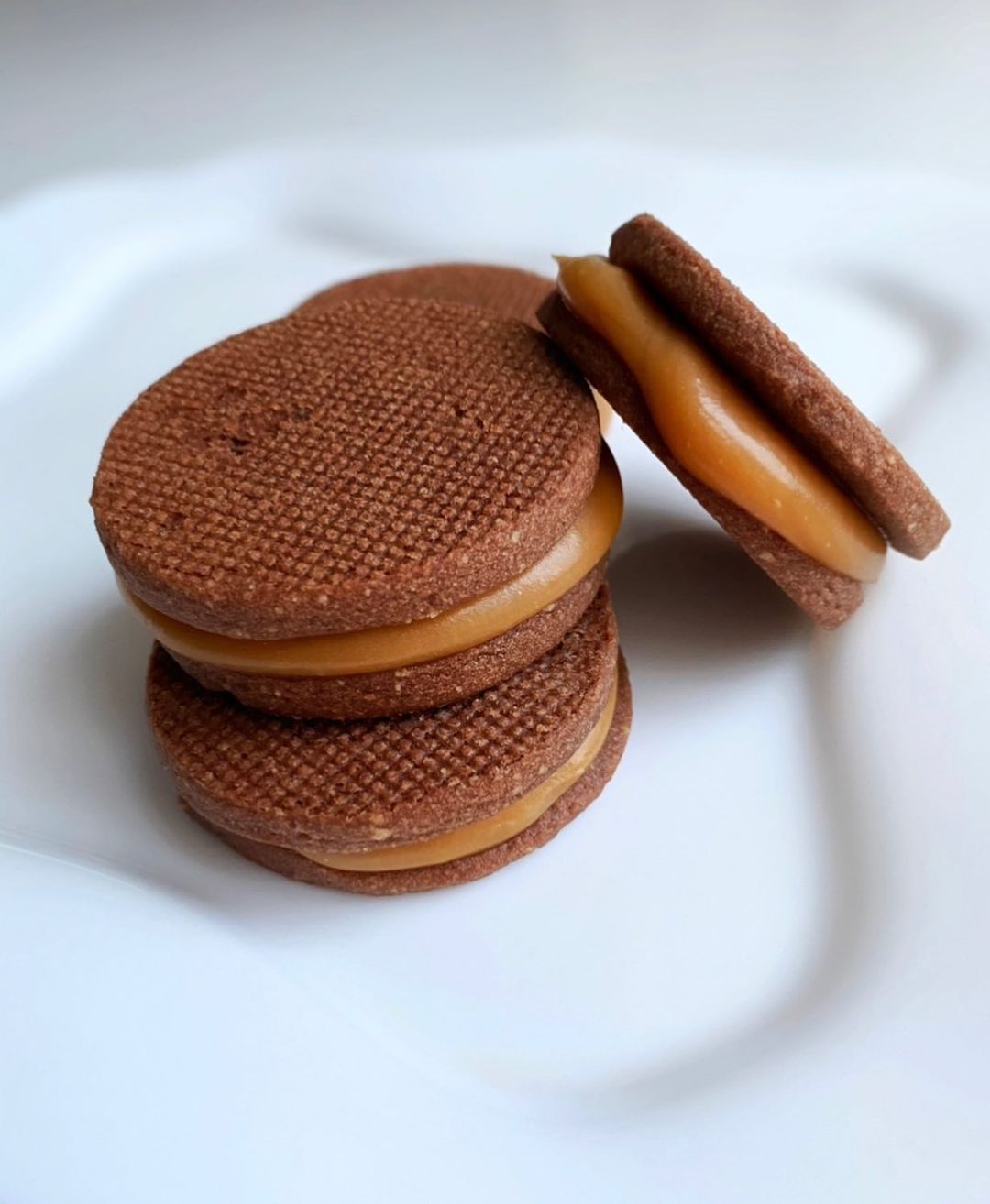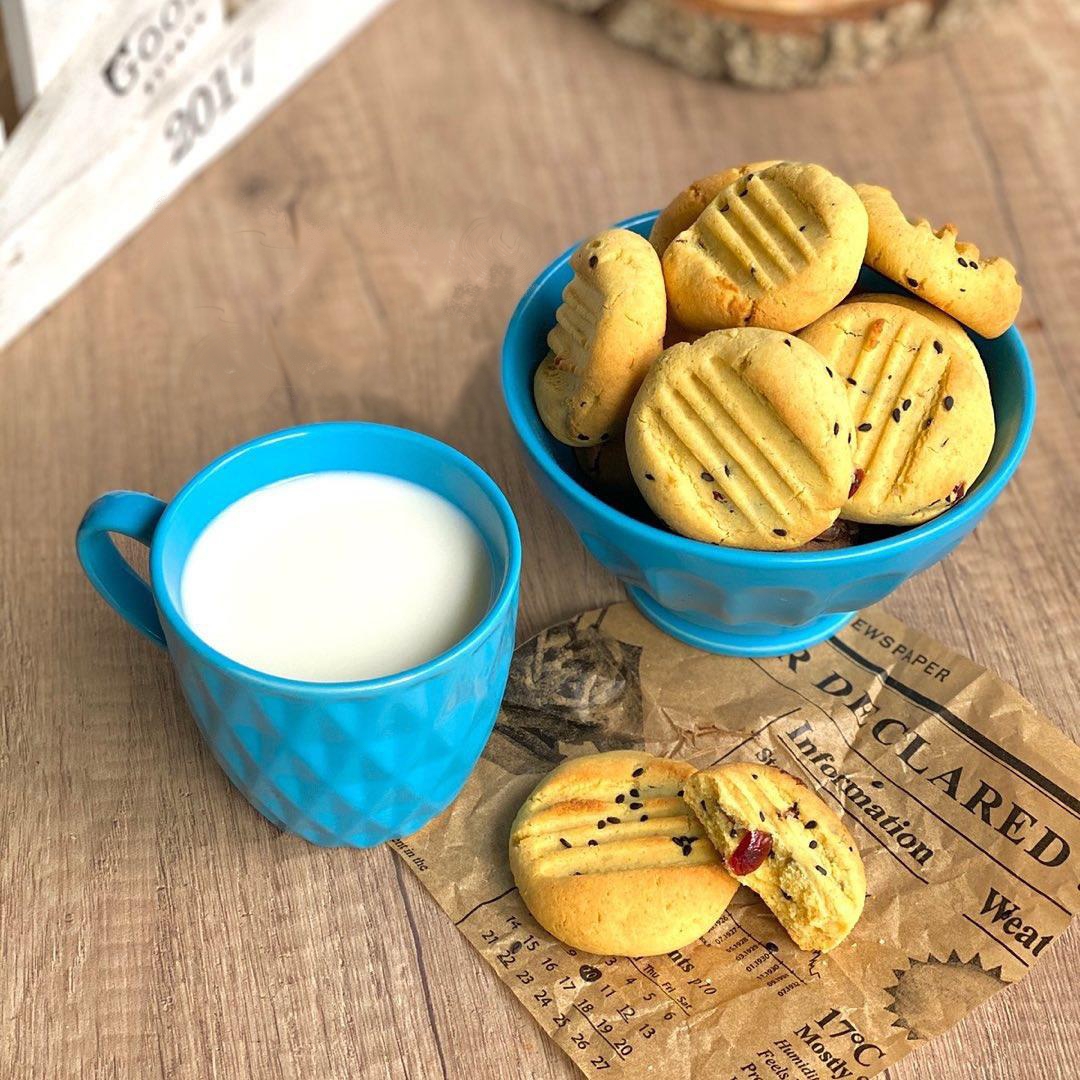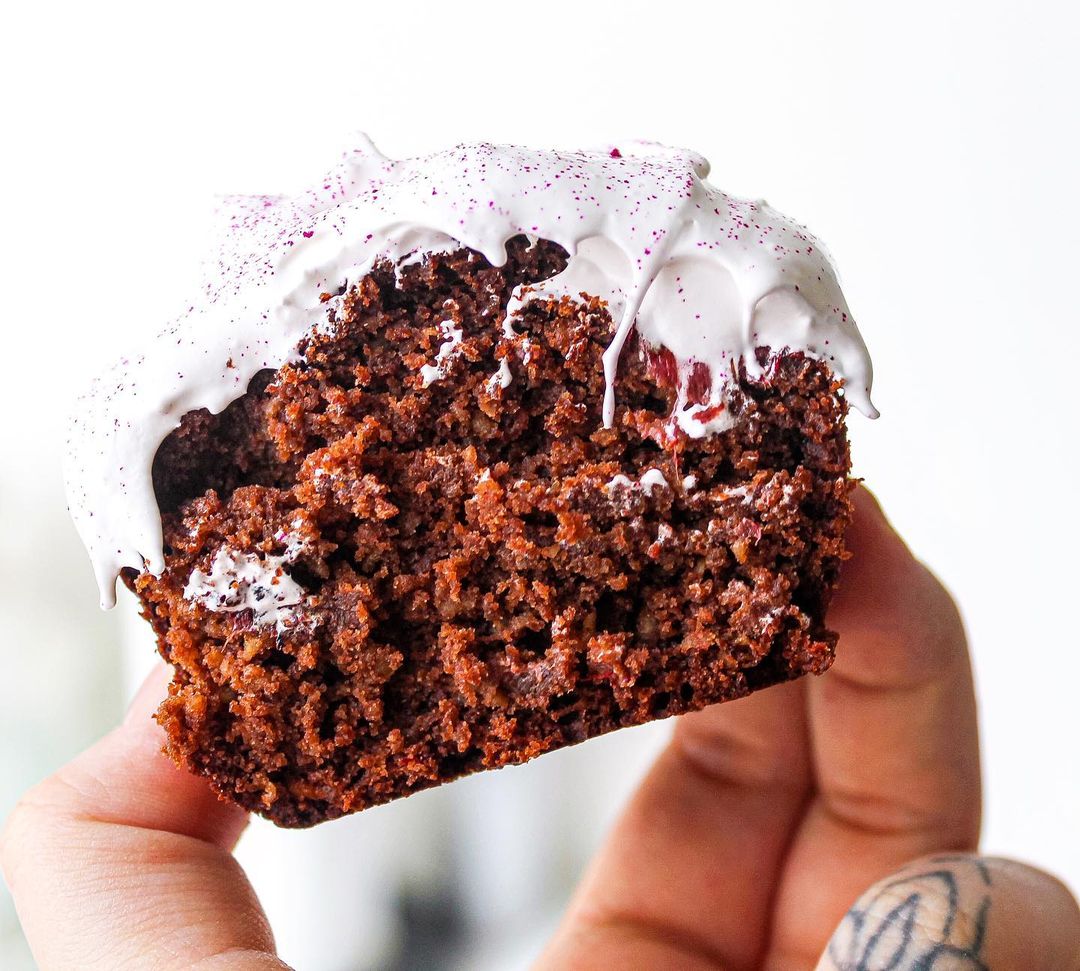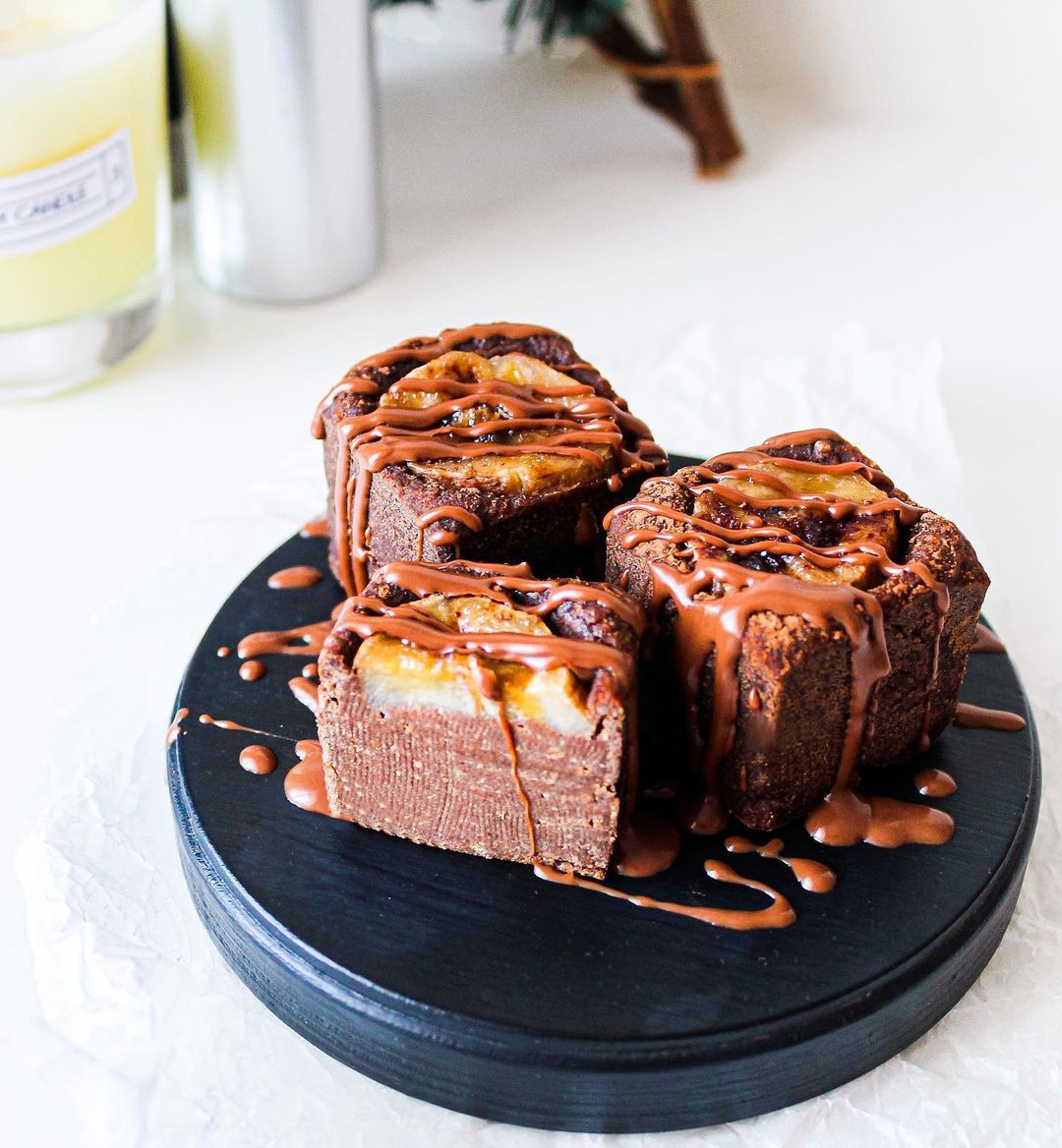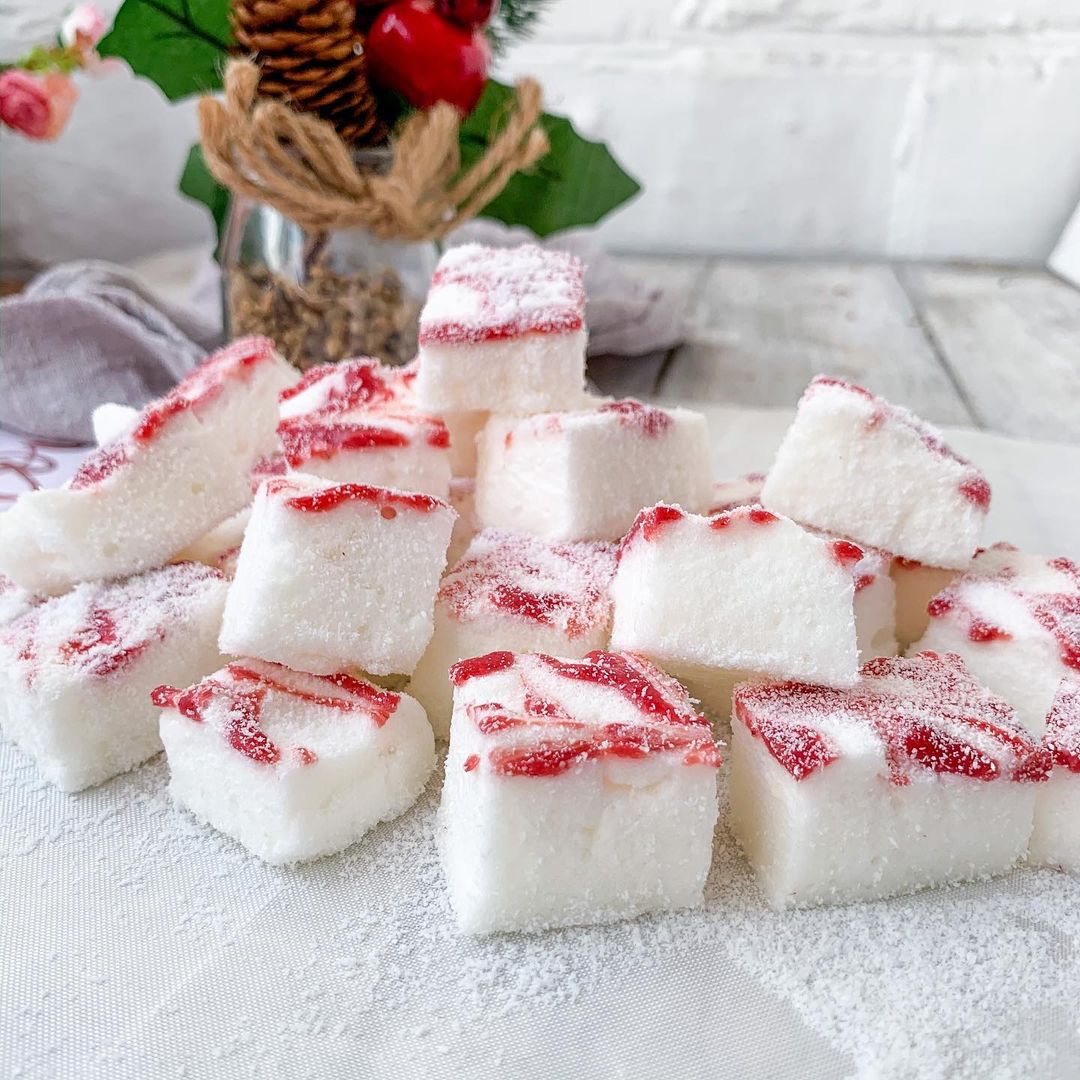Ingredients
Cookie Dough
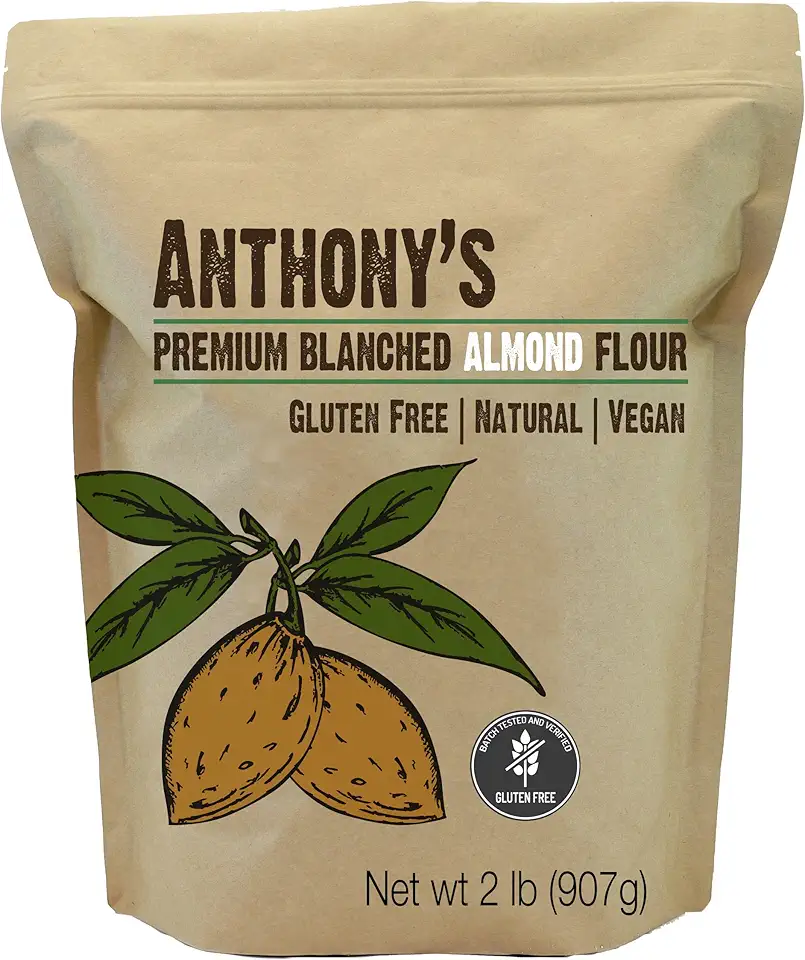 Anthony's Blanched Almond Flour, 2 lb, Finely Ground, Gluten Free, Non GMO, Vegan, Keto Friendly
$19.99
View details
Prime
best seller
Anthony's Blanched Almond Flour, 2 lb, Finely Ground, Gluten Free, Non GMO, Vegan, Keto Friendly
$19.99
View details
Prime
best seller
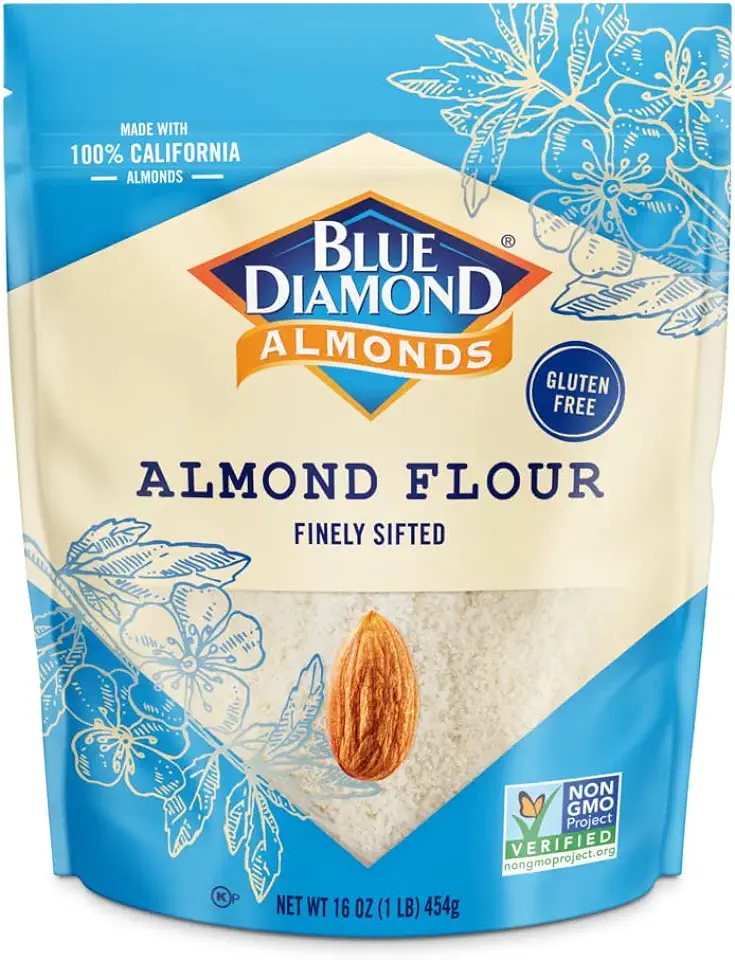 Blue Diamond Almonds, Almond Flour, Gluten Free, Blanched, Finely Sifted, 1 Lb
$8.95
$9.49
View details
Prime
Blue Diamond Almonds, Almond Flour, Gluten Free, Blanched, Finely Sifted, 1 Lb
$8.95
$9.49
View details
Prime
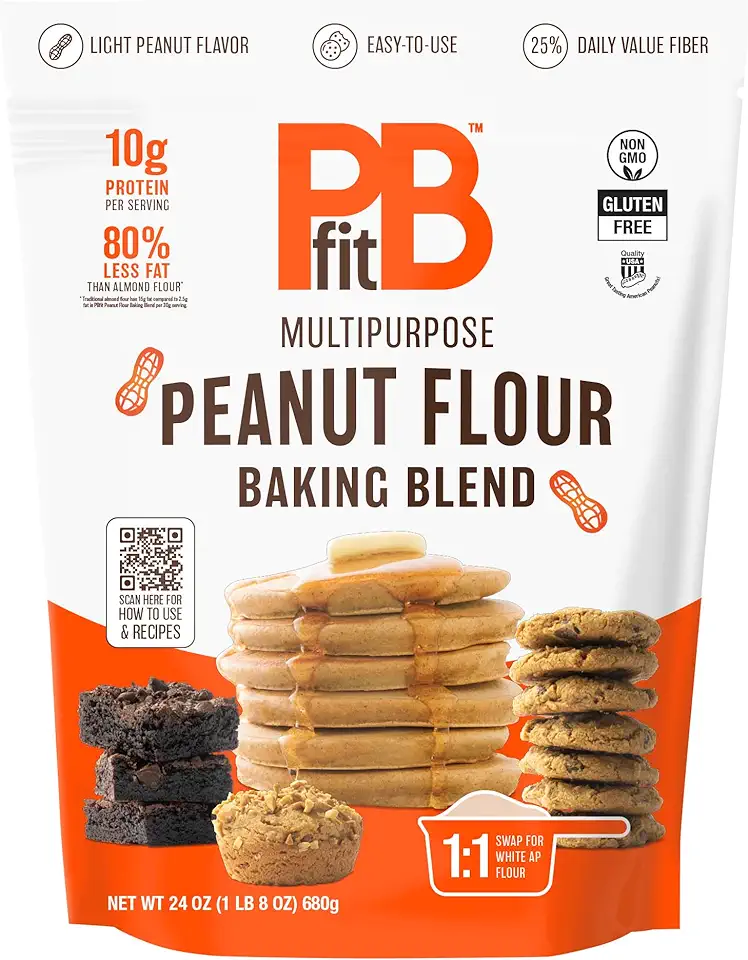 PBfit Peanut Flour Baking Blend - Gluten Free & Non GMO - 10g Protein per Serving 8% DV - 80% Less Fat than Almond Flour - 1 to 1 Swap for White Flour - Light Peanut Flavor - 25% DV Fiber - 24 oz
$9.77
View details
PBfit Peanut Flour Baking Blend - Gluten Free & Non GMO - 10g Protein per Serving 8% DV - 80% Less Fat than Almond Flour - 1 to 1 Swap for White Flour - Light Peanut Flavor - 25% DV Fiber - 24 oz
$9.77
View details
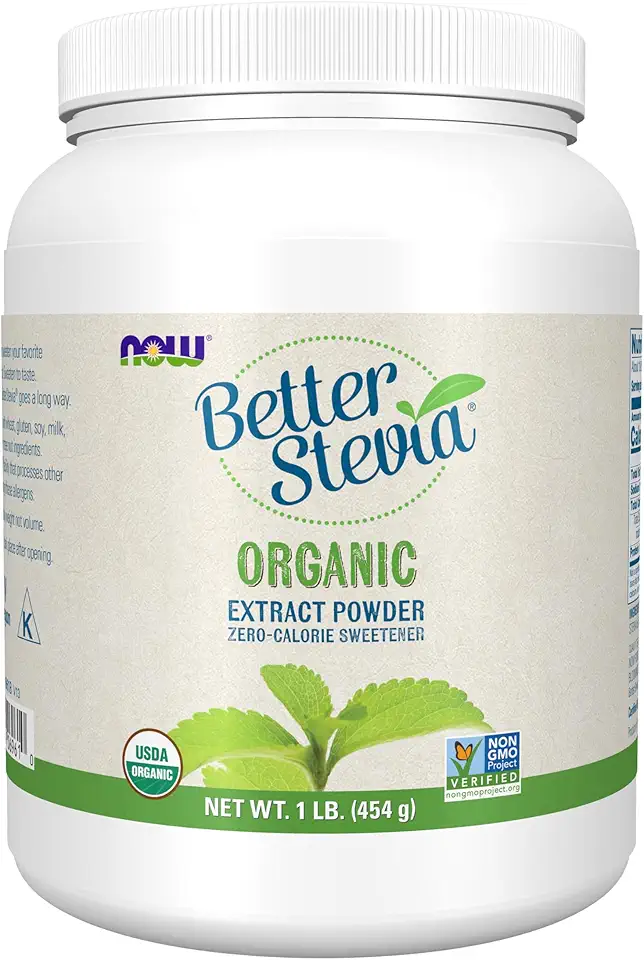 NOW Foods BetterStevia Organic Zero-Calorie Extract Powder, Keto Friendly, Suitable for Diabetics, No Erythritol, 1 Pound
$51.17
View details
Prime
best seller
NOW Foods BetterStevia Organic Zero-Calorie Extract Powder, Keto Friendly, Suitable for Diabetics, No Erythritol, 1 Pound
$51.17
View details
Prime
best seller
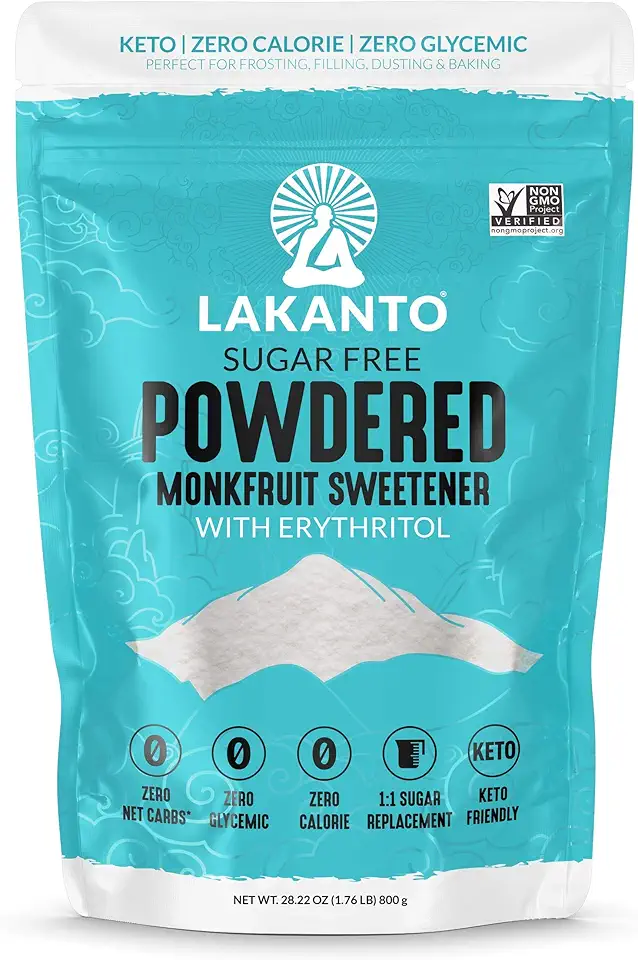 Lakanto Powdered Monk Fruit Sweetener with Erythritol - Powdered Sugar Substitute, Zero Calorie, Keto Diet Friendly, Zero Net Carbs, Baking, Extract, Sugar Replacement (Powdered - 1.76 lb)
$19.99
View details
Prime
Lakanto Powdered Monk Fruit Sweetener with Erythritol - Powdered Sugar Substitute, Zero Calorie, Keto Diet Friendly, Zero Net Carbs, Baking, Extract, Sugar Replacement (Powdered - 1.76 lb)
$19.99
View details
Prime
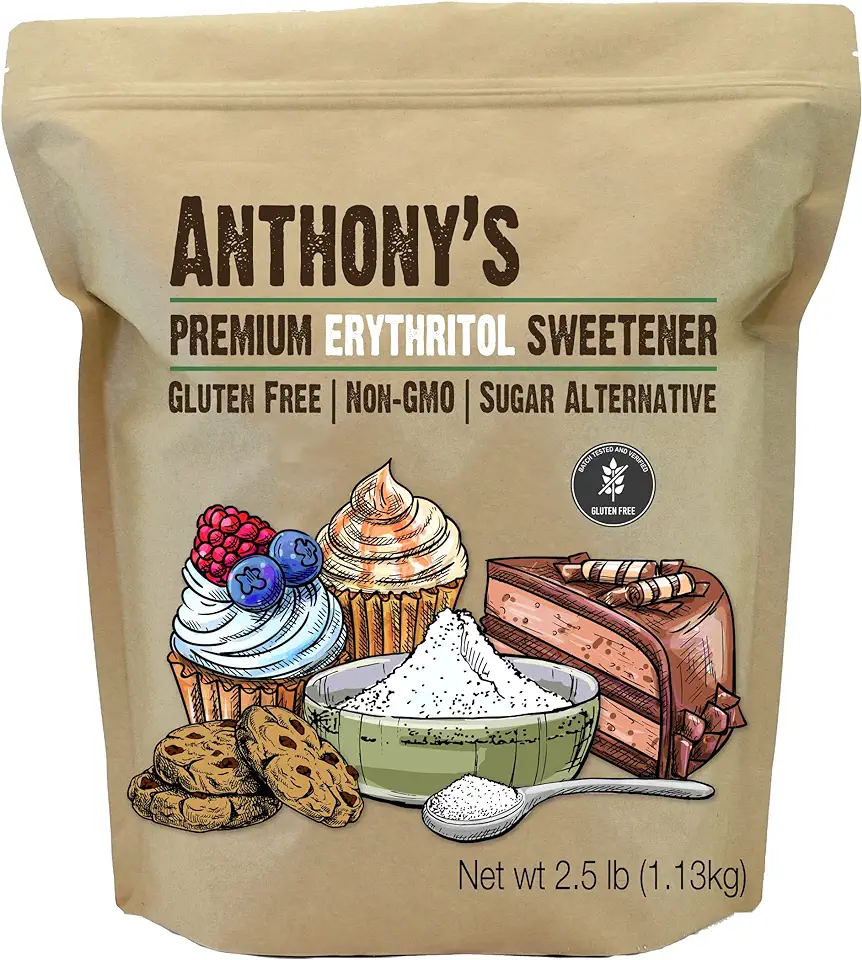 Anthony's Erythritol Granules, 2.5 lb, Non GMO, Sweetener, Keto & Paleo Friendly
$19.99
View details
Anthony's Erythritol Granules, 2.5 lb, Non GMO, Sweetener, Keto & Paleo Friendly
$19.99
View details
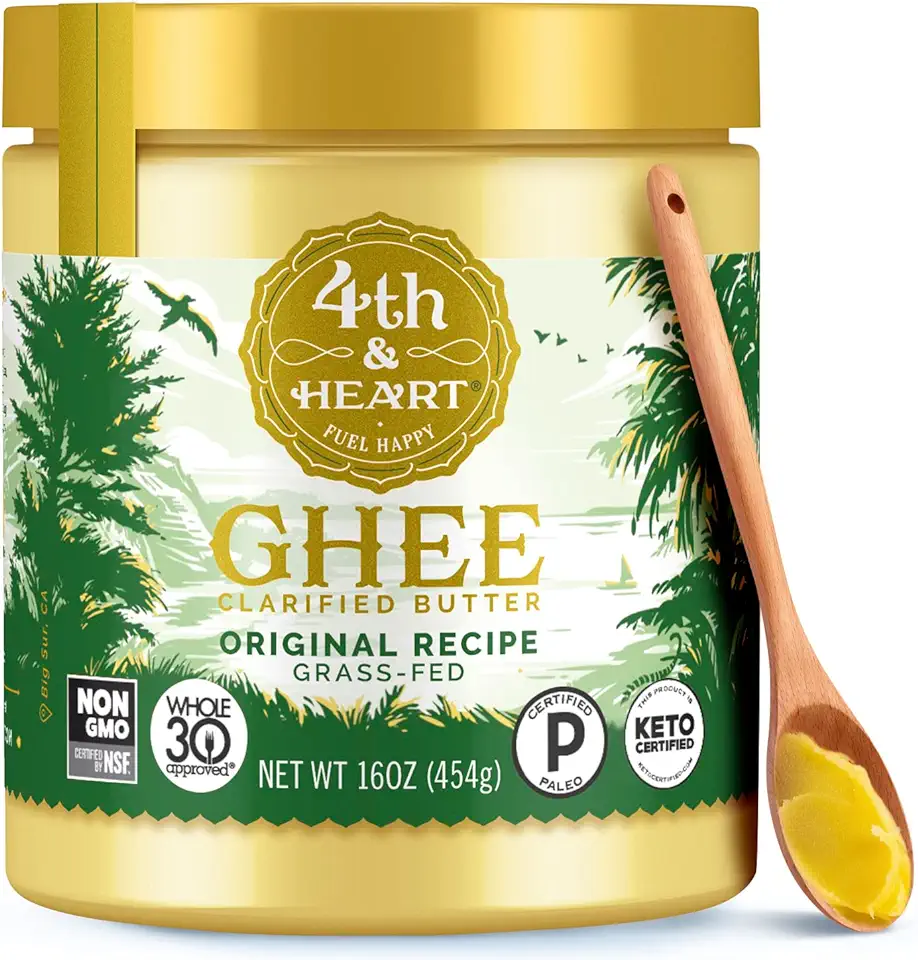 4th & Heart Original Grass-Fed Ghee, Clarified Butter, Keto, Pasture Raised, Lactose and Casein Free, Certified Paleo (16 Ounces)
$21.04
View details
Prime
4th & Heart Original Grass-Fed Ghee, Clarified Butter, Keto, Pasture Raised, Lactose and Casein Free, Certified Paleo (16 Ounces)
$21.04
View details
Prime
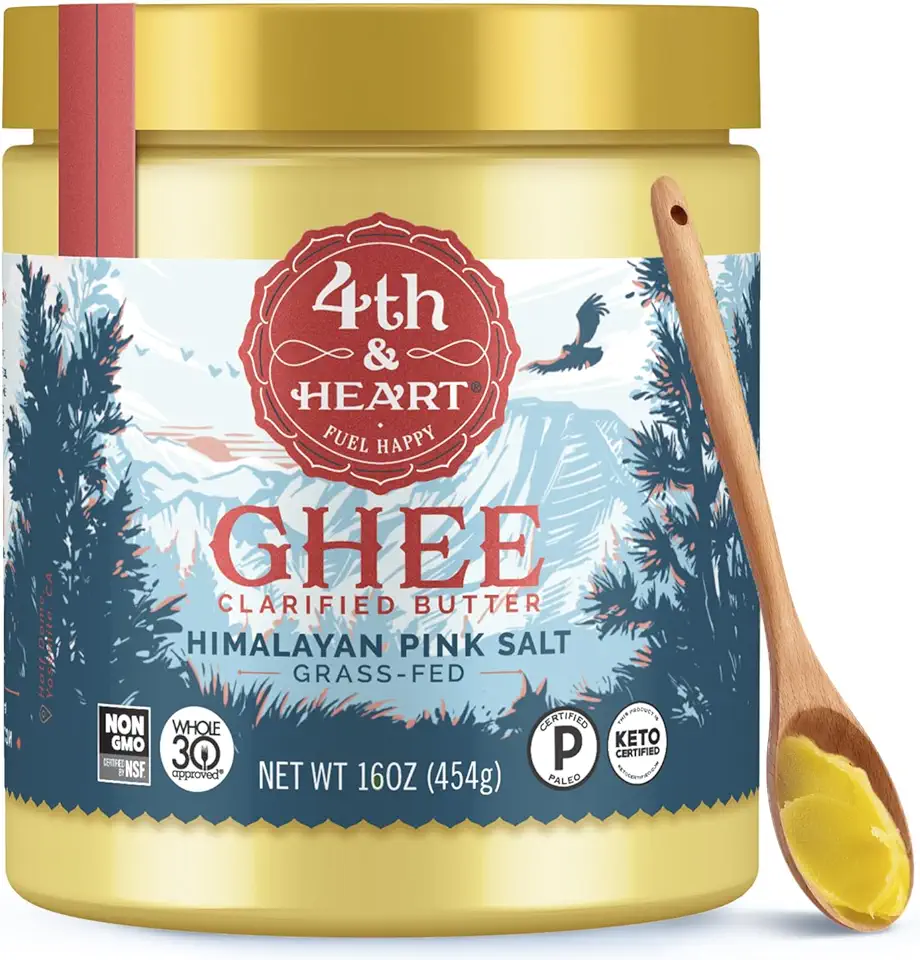 4th & Heart Himalayan Pink Salt Grass-Fed Ghee, Clarified Butter, Keto Pasture Raised, Non-GMO, Lactose and Casein Free, Certified Paleo (16 Ounces)
$16.25
View details
Prime
4th & Heart Himalayan Pink Salt Grass-Fed Ghee, Clarified Butter, Keto Pasture Raised, Non-GMO, Lactose and Casein Free, Certified Paleo (16 Ounces)
$16.25
View details
Prime
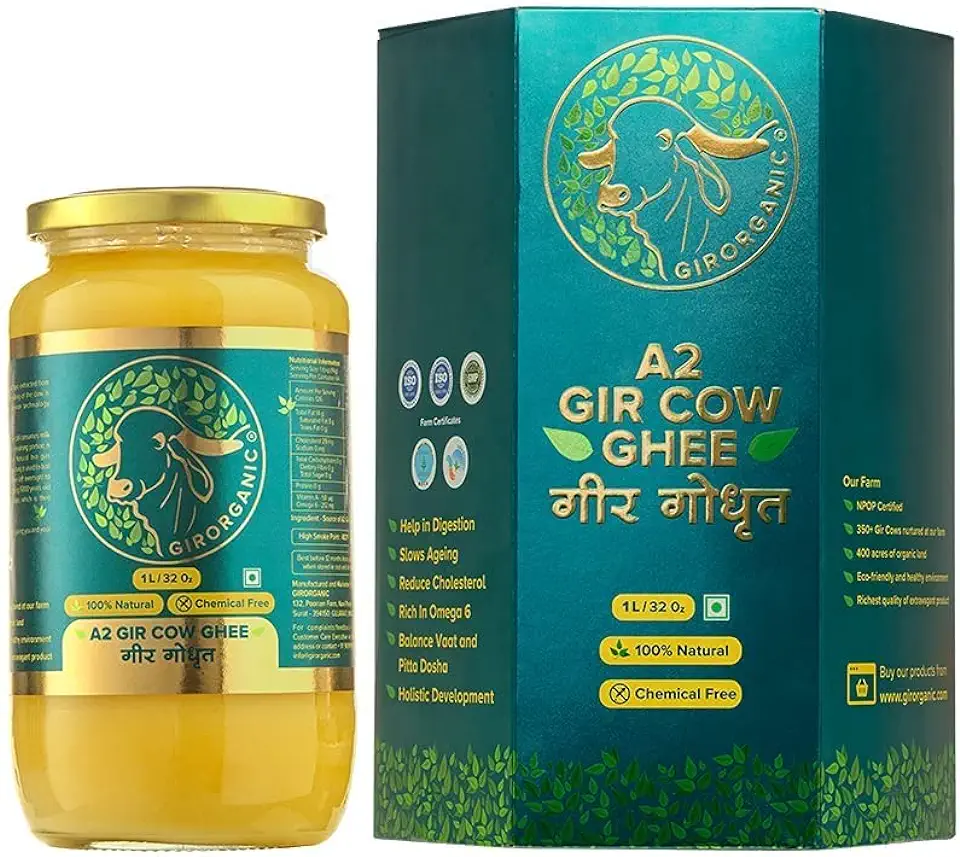 GirOrganic Grass Fed A2 Ghee| Clarified Butter (32 Oz) - Unsalted Gir Cow Ghee Butter - Organic Ghee Oil - Pasture Raised, Lactose-Free 32 Oz
$90.00
View details
GirOrganic Grass Fed A2 Ghee| Clarified Butter (32 Oz) - Unsalted Gir Cow Ghee Butter - Organic Ghee Oil - Pasture Raised, Lactose-Free 32 Oz
$90.00
View details
Toppings
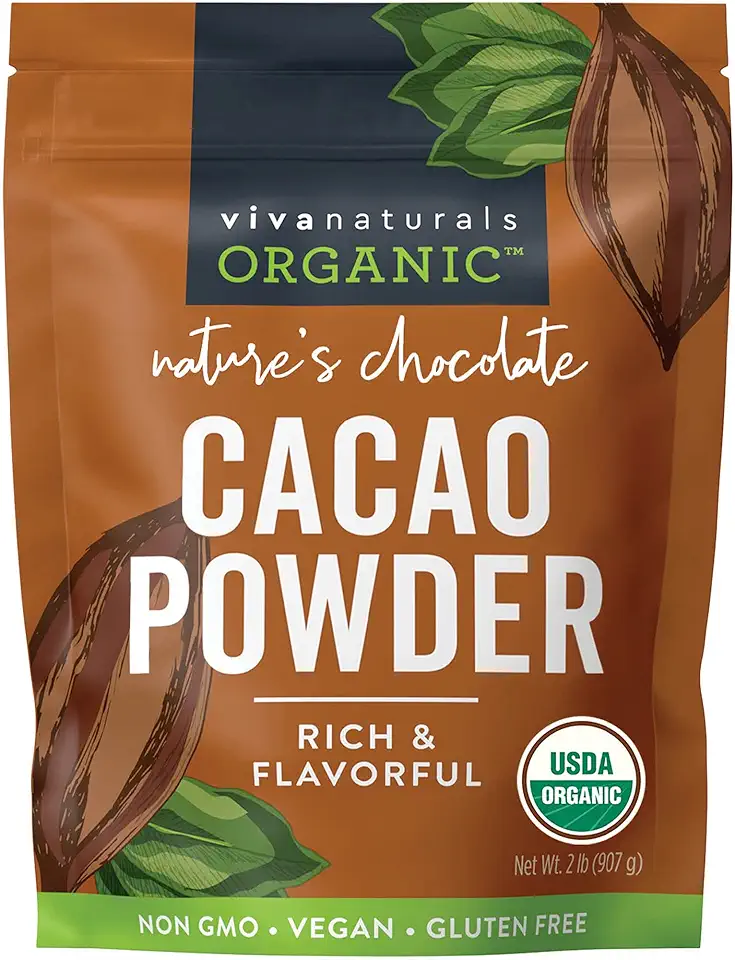 Viva Naturals Organic Cacao Powder, 2lb - Unsweetened Cocoa Powder With Rich Dark Chocolate Flavor, Perfect for Baking & Smoothies - Certified Vegan, Keto & Paleo, Non-GMO & Gluten-Free, 907 g
$20.49
View details
Viva Naturals Organic Cacao Powder, 2lb - Unsweetened Cocoa Powder With Rich Dark Chocolate Flavor, Perfect for Baking & Smoothies - Certified Vegan, Keto & Paleo, Non-GMO & Gluten-Free, 907 g
$20.49
View details
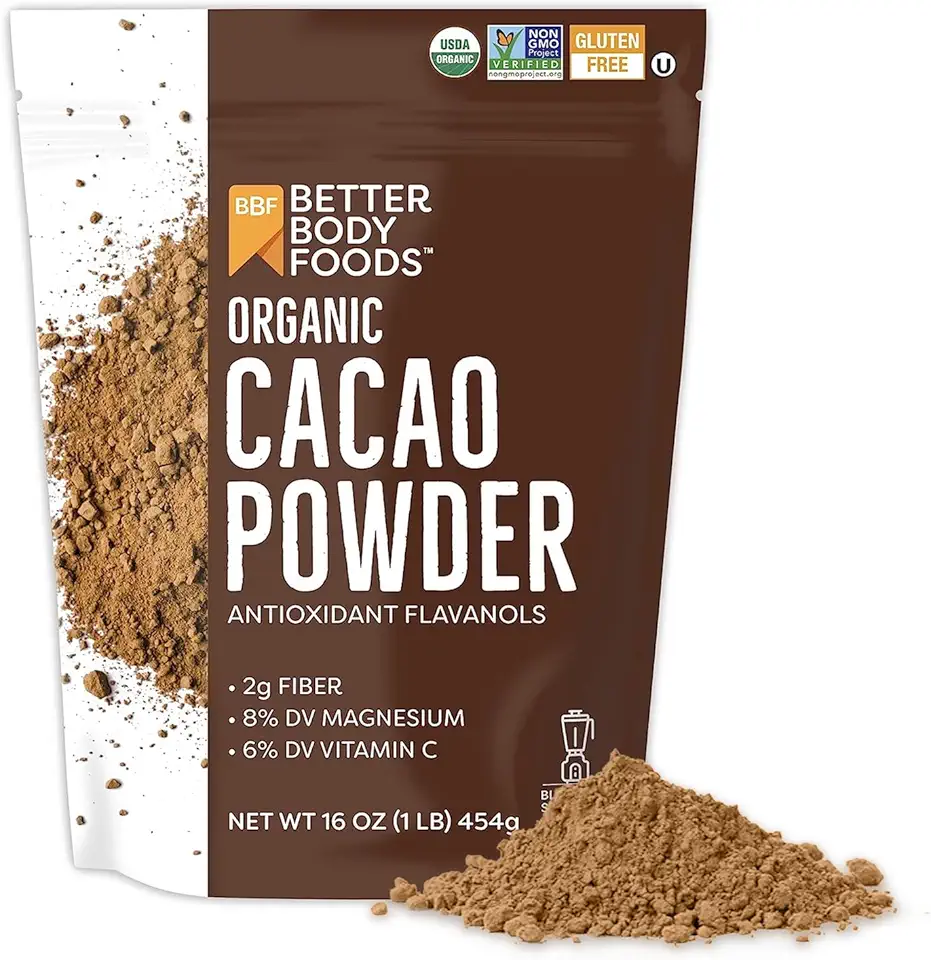 BetterBody Foods Organic Cacao Powder, Rich Chocolate Flavor, Non-GMO, Gluten-Free, Cocoa, 16 ounce, 1 lb bag
$10.41
View details
Prime
BetterBody Foods Organic Cacao Powder, Rich Chocolate Flavor, Non-GMO, Gluten-Free, Cocoa, 16 ounce, 1 lb bag
$10.41
View details
Prime
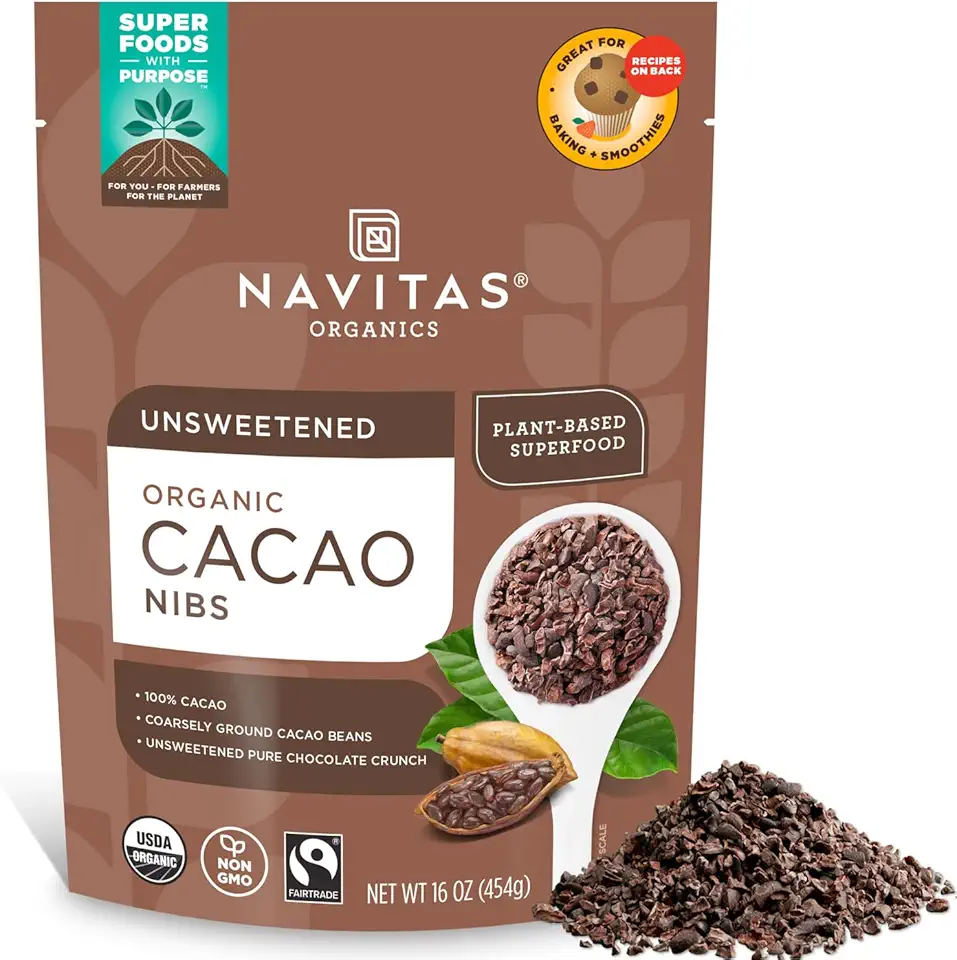 Navitas Organics Raw Cacao Nibs, 16oz. Bag, 15 Servings - Organic, Non-GMO, Fair Trade, Gluten-Free
$21.92
View details
Navitas Organics Raw Cacao Nibs, 16oz. Bag, 15 Servings - Organic, Non-GMO, Fair Trade, Gluten-Free
$21.92
View details
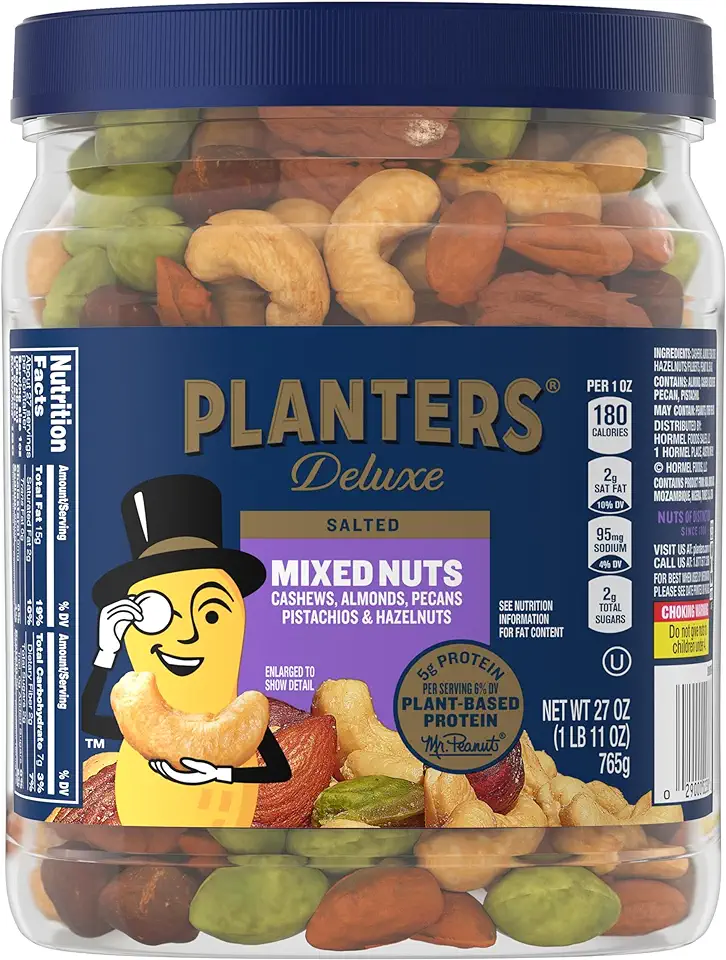 PLANTERS Deluxe Mixed Nuts, Cashews, Almonds, Pecans, Pistachios, Hazelnuts, Roasted with Sea Salt, Party Snacks, Plant-Based Protein, Quick Snack for Adults, After School Snack, 27oz Container
$15.92
$17.51
View details
Prime
best seller
PLANTERS Deluxe Mixed Nuts, Cashews, Almonds, Pecans, Pistachios, Hazelnuts, Roasted with Sea Salt, Party Snacks, Plant-Based Protein, Quick Snack for Adults, After School Snack, 27oz Container
$15.92
$17.51
View details
Prime
best seller
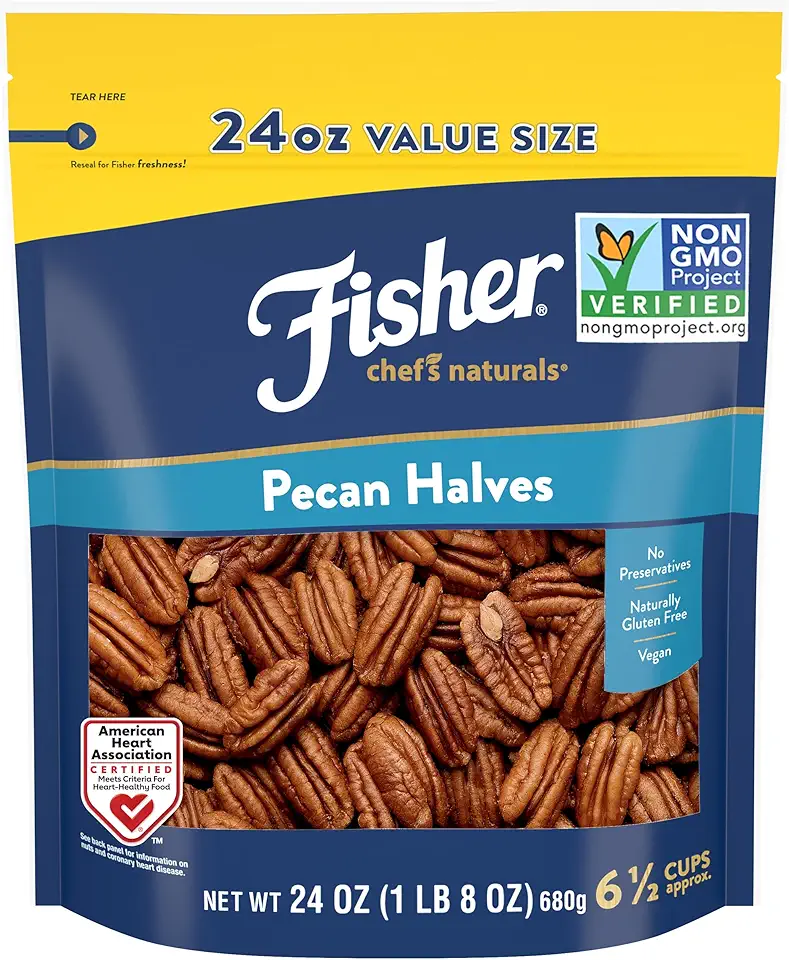 Fisher Chef's Naturals Pecan Halves 24oz Resealable Bag, Unsalted Raw Nuts for Cooking, Baking & Snacking, Vegan Protein, Keto Snack, Gluten Free
$14.81
View details
Prime
Fisher Chef's Naturals Pecan Halves 24oz Resealable Bag, Unsalted Raw Nuts for Cooking, Baking & Snacking, Vegan Protein, Keto Snack, Gluten Free
$14.81
View details
Prime
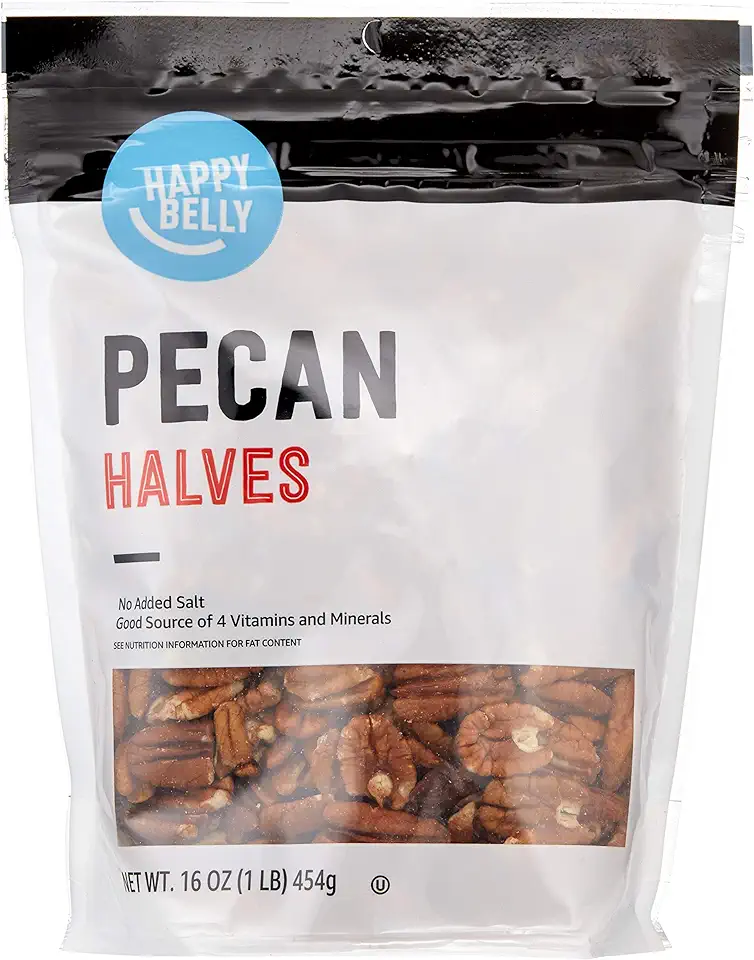 Amazon Brand - Happy Belly Pecan Halves, No Added Salt, 16 ounce (Pack of 1)
$10.98
View details
Amazon Brand - Happy Belly Pecan Halves, No Added Salt, 16 ounce (Pack of 1)
$10.98
View details
Instructions
Step 1
Preparing the Dough
Step 2
Shaping and Baking
Step 3
Cooling and Dipping
Servings
Equipment
A good mixing bowl is essential for combining your ingredients thoroughly. A medium-sized bowl should do the trick for this recipe.
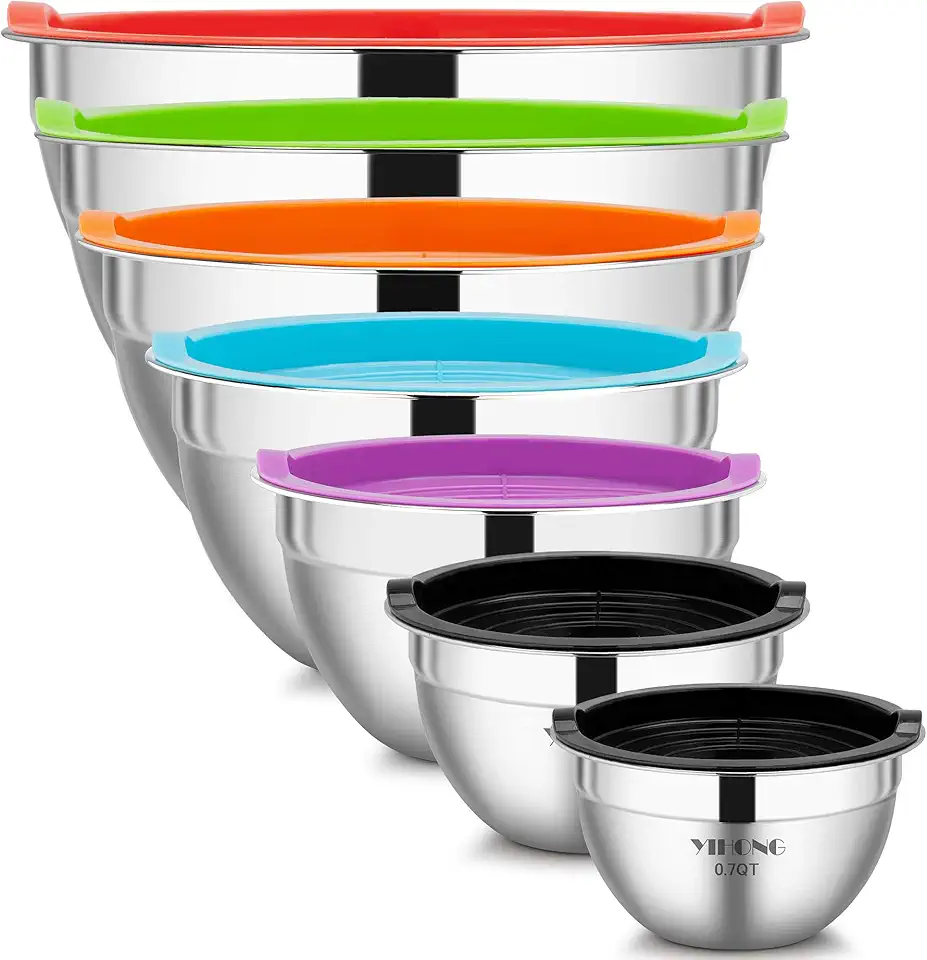 YIHONG 7 Piece Mixing Bowls with Lids for Kitchen, Stainless Steel Mixing Bowls Set Ideal for Baking, Prepping, Cooking and Serving Food, Nesting Metal Mixing Bowls for Space Saving Storage
$27.99
$35.99
View details
Prime
best seller
YIHONG 7 Piece Mixing Bowls with Lids for Kitchen, Stainless Steel Mixing Bowls Set Ideal for Baking, Prepping, Cooking and Serving Food, Nesting Metal Mixing Bowls for Space Saving Storage
$27.99
$35.99
View details
Prime
best seller
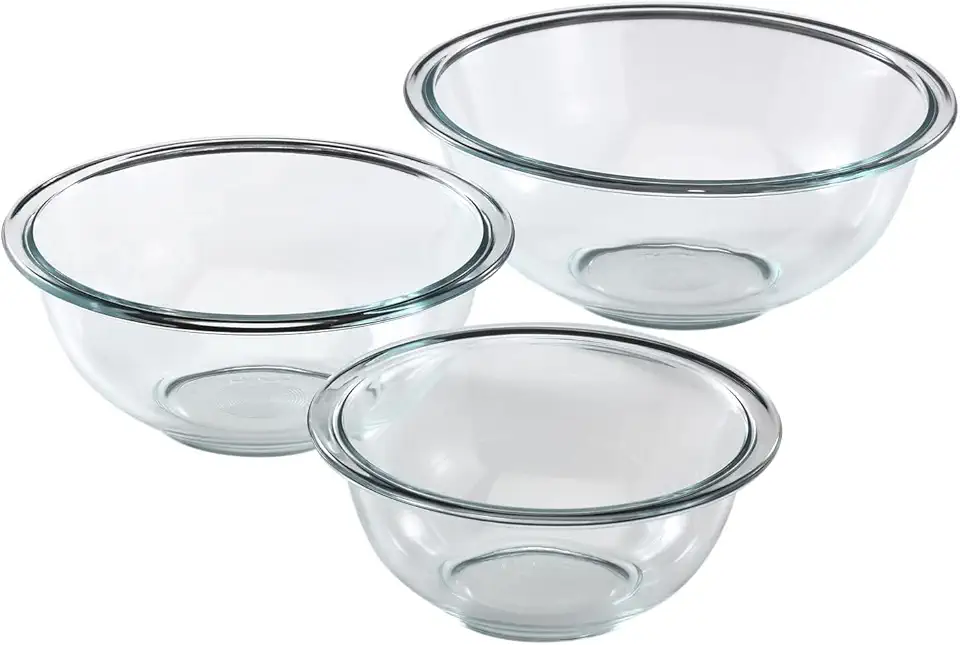 Pyrex Glass, 3-Piece, 3 PC Mixing Bowl Set
$17.53
View details
Prime
Pyrex Glass, 3-Piece, 3 PC Mixing Bowl Set
$17.53
View details
Prime
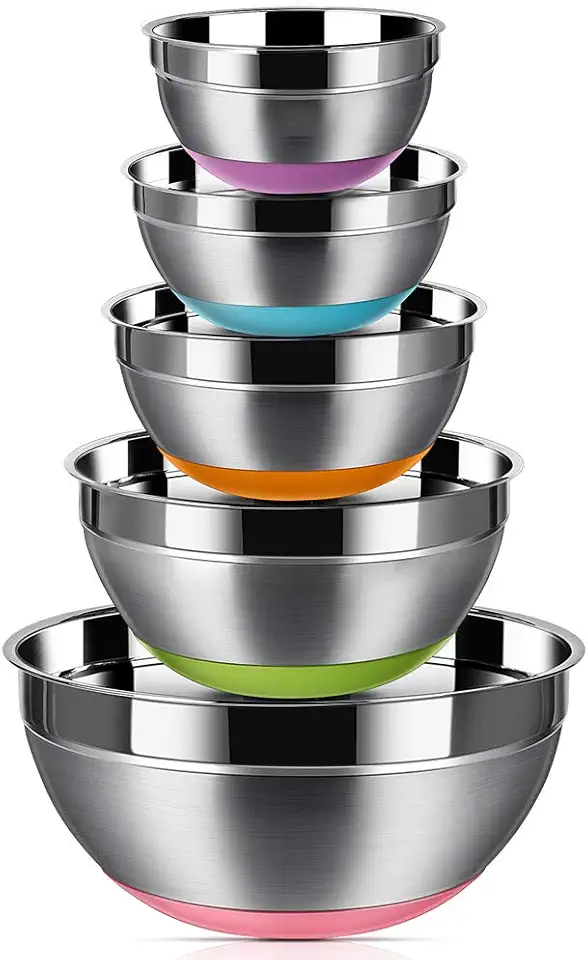 REGILLER Stainless Steel Mixing Bowls (Set of 5), Non Slip Colorful Silicone Bottom Nesting Storage Bowls, Polished Mirror Finish For Healthy Meal Mixing and Prepping 1.5-2 - 2.5-3.5 - 7QT (Colorful)
$26.99
View details
REGILLER Stainless Steel Mixing Bowls (Set of 5), Non Slip Colorful Silicone Bottom Nesting Storage Bowls, Polished Mirror Finish For Healthy Meal Mixing and Prepping 1.5-2 - 2.5-3.5 - 7QT (Colorful)
$26.99
View details
Line your baking sheet with parchment paper for easy cleanup and to prevent sticking.
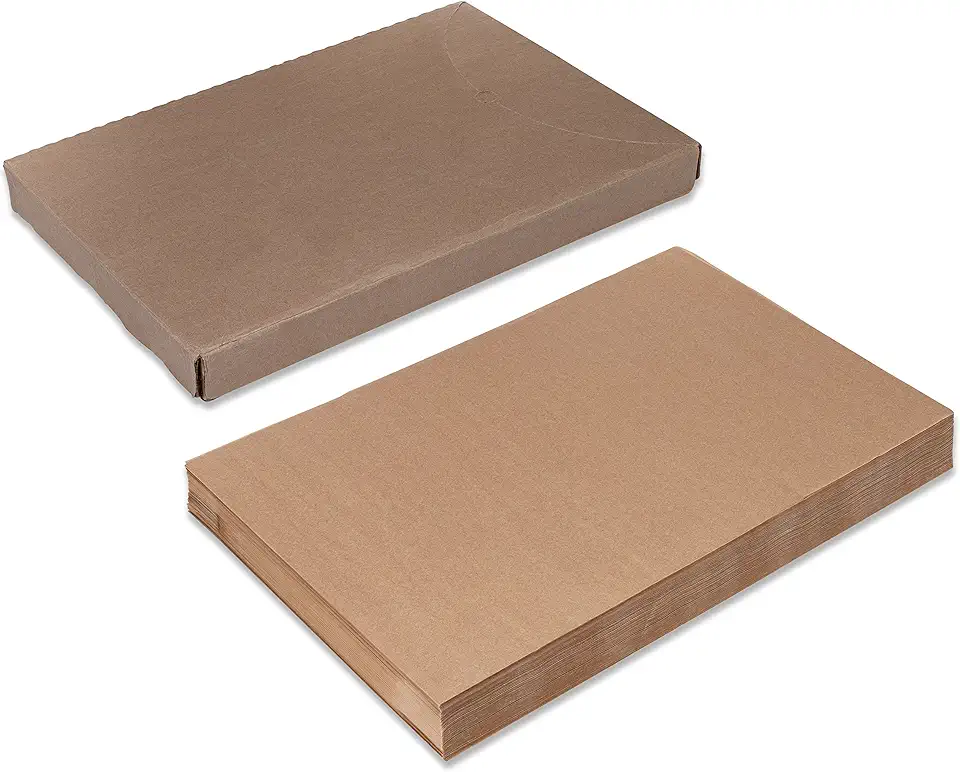 Paterson Paper 16" x 24" Full Size Unbleached Chromium-Free Reusable Baking Parchment Paper Sheets Commercial Bun/Sheet Pan Liners - 1000/Case - 425F - Non-Stick/Grease-Resistant
$169.58
View details
Prime
best seller
Paterson Paper 16" x 24" Full Size Unbleached Chromium-Free Reusable Baking Parchment Paper Sheets Commercial Bun/Sheet Pan Liners - 1000/Case - 425F - Non-Stick/Grease-Resistant
$169.58
View details
Prime
best seller
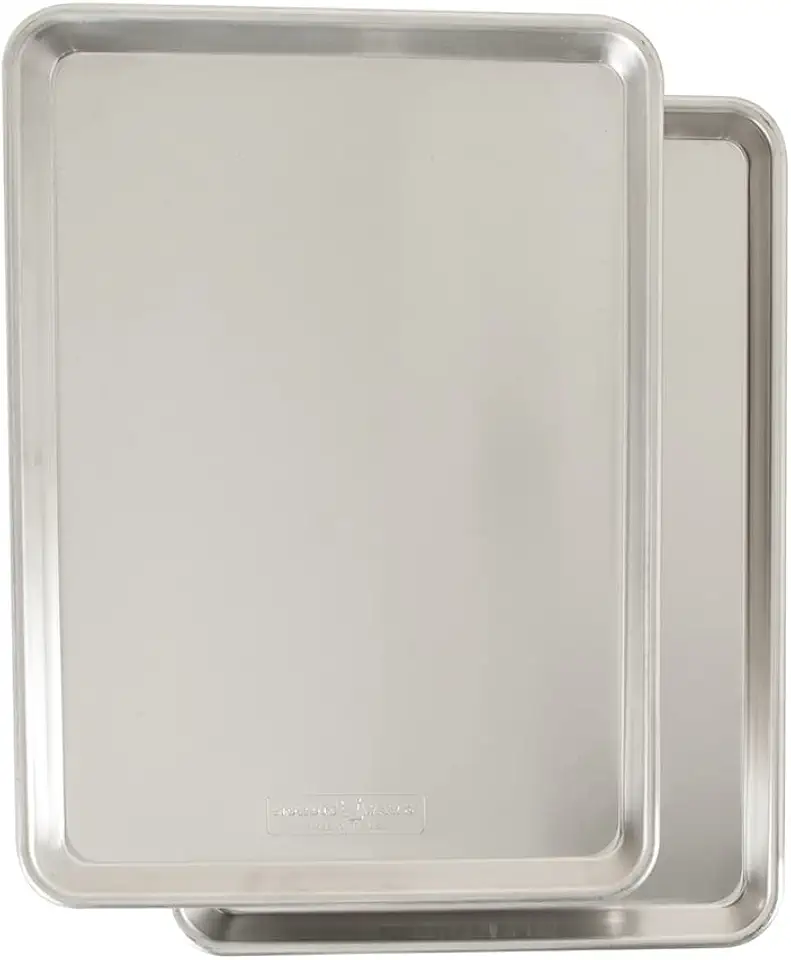 Nordic Ware Naturals Half Sheet, 2-Pack, Natural
$37.80
View details
Prime
Nordic Ware Naturals Half Sheet, 2-Pack, Natural
$37.80
View details
Prime
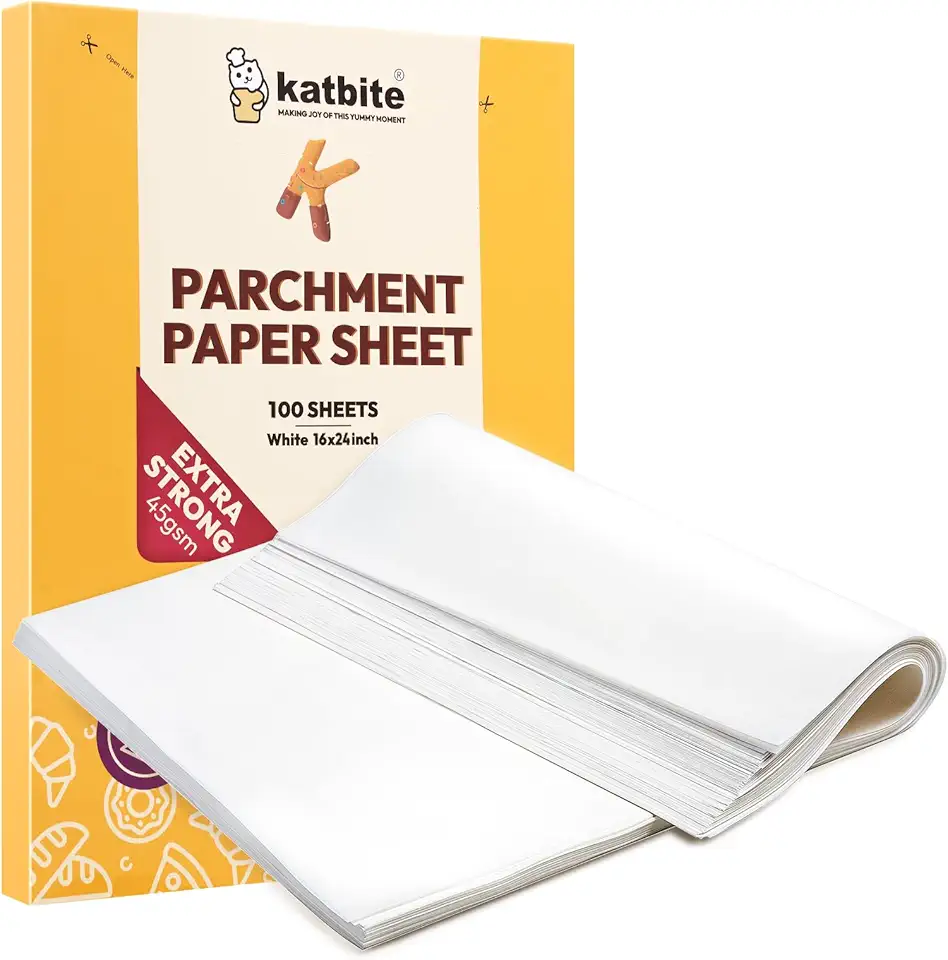 Katbite 16x24 inch Heavy Duty Parchment Paper Sheets, 100Pcs Precut Non-Stick Full Parchment Sheets for Baking, Cooking, Grilling, Frying and Steaming, Full Sheet Baking Pan Liners, Commercial Baking
$18.99
$25.99
View details
Katbite 16x24 inch Heavy Duty Parchment Paper Sheets, 100Pcs Precut Non-Stick Full Parchment Sheets for Baking, Cooking, Grilling, Frying and Steaming, Full Sheet Baking Pan Liners, Commercial Baking
$18.99
$25.99
View details
A reliable oven with a convection mode will ensure even baking. Preheat it ahead of time to get the perfect consistency.
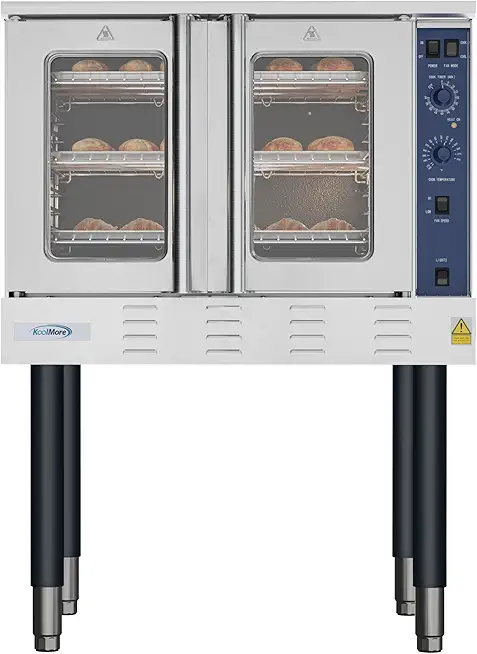 KoolMore 38 in. Full-Size Single Deck Commercial Natural Gas Convection Oven 54,000 BTU in Stainless-Steel (KM-CCO54-NG)
$3651.89
View details
Prime
KoolMore 38 in. Full-Size Single Deck Commercial Natural Gas Convection Oven 54,000 BTU in Stainless-Steel (KM-CCO54-NG)
$3651.89
View details
Prime
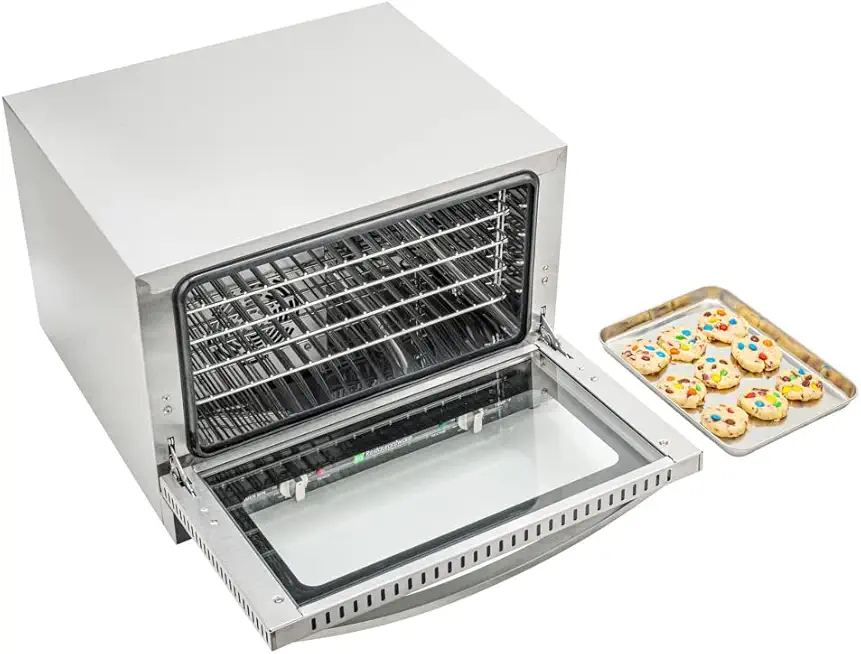 Restaurantware Hi Tek Half Size Convection Oven 1 Countertop Electric Oven - 1.5 Cu. Ft. 120V Stainless Steel Commercial Convection Oven 1600W 4 Racks Included
$1077.29
View details
Prime
Restaurantware Hi Tek Half Size Convection Oven 1 Countertop Electric Oven - 1.5 Cu. Ft. 120V Stainless Steel Commercial Convection Oven 1600W 4 Racks Included
$1077.29
View details
Prime
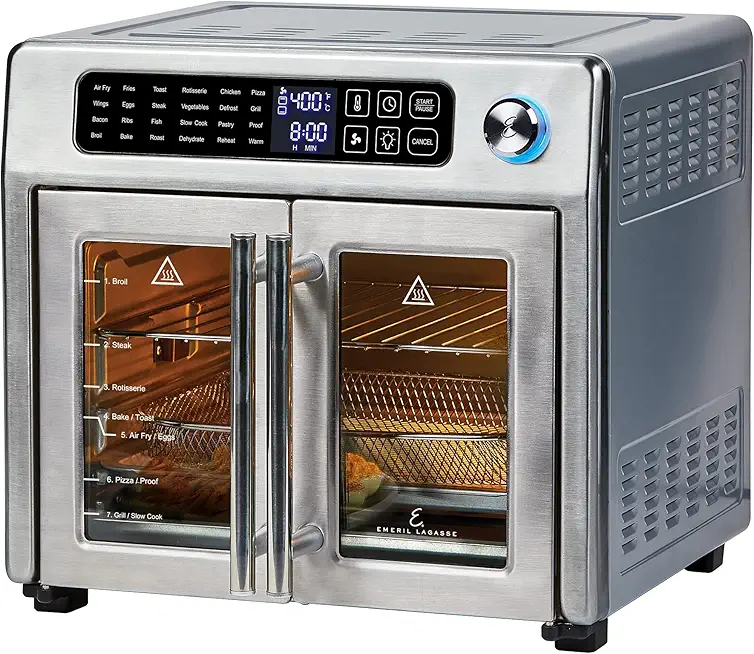 Emeril Lagasse 26 QT Extra Large Air Fryer, Convection Toaster Oven with French Doors, Stainless Steel
$189.99
View details
Emeril Lagasse 26 QT Extra Large Air Fryer, Convection Toaster Oven with French Doors, Stainless Steel
$189.99
View details
For melting cocoa nibs, a microwave or double boiler works well. If using a microwave, do this in short, 15-second bursts to prevent burning.
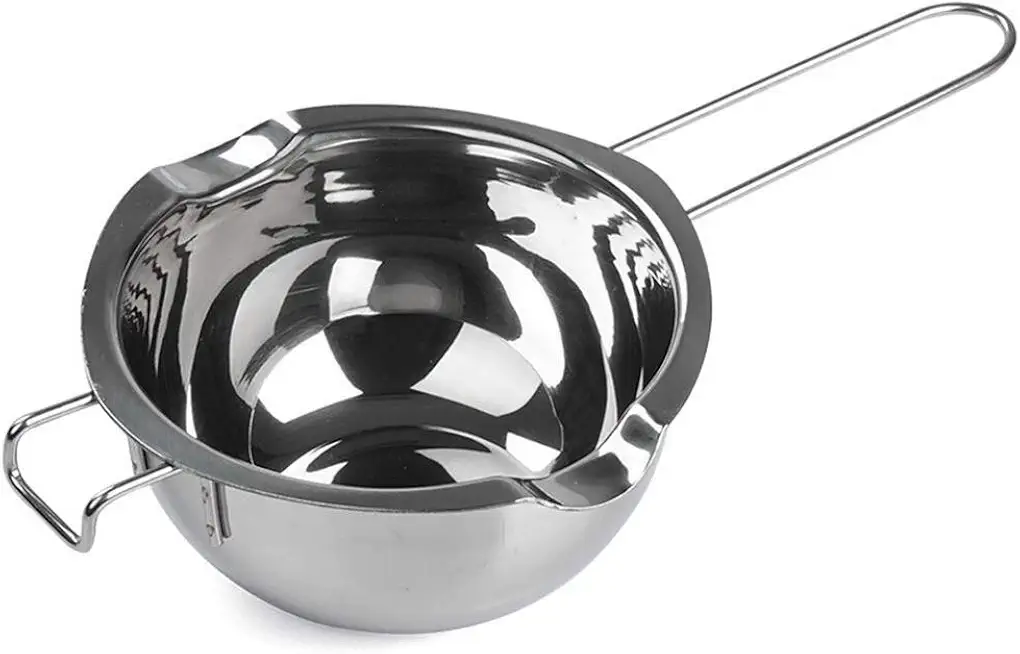 Stainless Steel Double Boiler Pot for Melting Chocolate, Candy and Candle Making (18/8 Steel, 2 Cup Capacity, 480ML)
$10.99
View details
Prime
Stainless Steel Double Boiler Pot for Melting Chocolate, Candy and Candle Making (18/8 Steel, 2 Cup Capacity, 480ML)
$10.99
View details
Prime
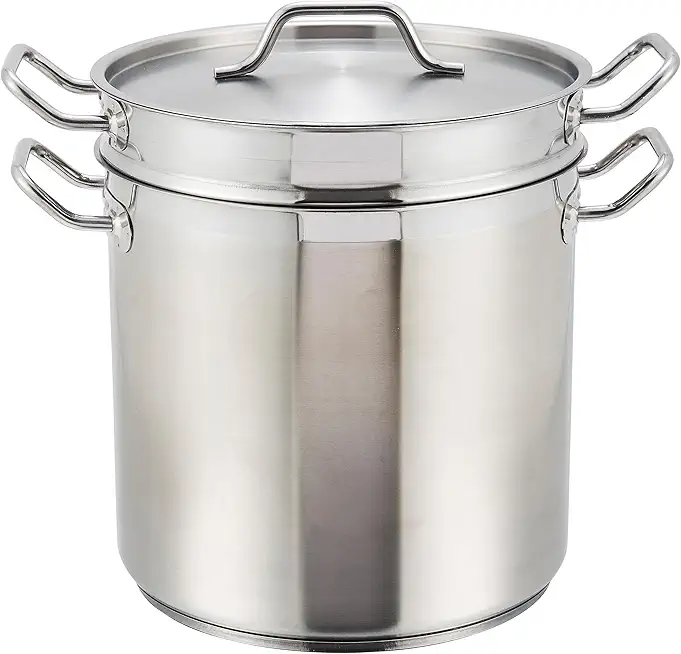 Winware Stainless 8 Quart Double Boiler with Cover
$74.51
$118.10
View details
Prime
Winware Stainless 8 Quart Double Boiler with Cover
$74.51
$118.10
View details
Prime
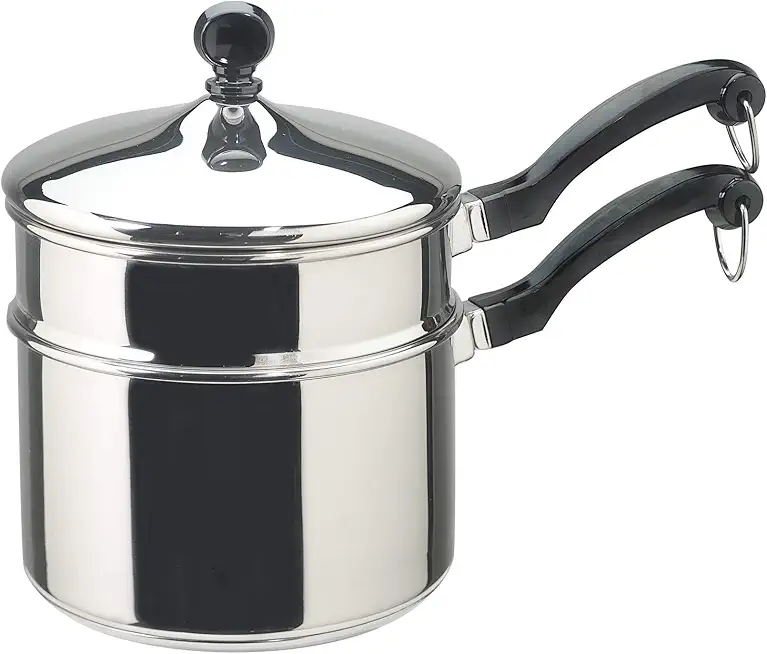 Farberware Classic Stainless Series 2-Quart Covered Double Boiler
$39.99
View details
Farberware Classic Stainless Series 2-Quart Covered Double Boiler
$39.99
View details
Variations
Faq
- I'm new to baking; can I use regular flour instead of almond flour?
Almond flour gives these cookies their unique texture and flavor, and it's gluten-free. Using regular flour would change the consistency and might require adjusting the liquid ratios.
- What is erythritol powder, and can I substitute it with sugar?
Erythritol is a sugar substitute that's lower in calories and has a lower glycemic impact. You can use sugar instead, but it will affect the nutritional profile.
- Can I add other mix-ins to the dough?
Absolutely! Feel free to add chopped dried fruits, other nuts, or even different types of chocolate chips to customize your cookies.
- How can I store these cookies, and how long do they last?
Store them in an airtight container at room temperature for up to a week. For longer storage, keep them in the fridge or freezer.
- What's the best way to melt cocoa nibs without burning them?
Use a double boiler for gentle, even heat, or melt them in the microwave in 15-second bursts, stirring each time until smooth.
- Can these cookies be made ahead of time and frozen?
Yes, you can make the dough and freeze it for up to a month. Thaw it in the fridge before baking as directed.

